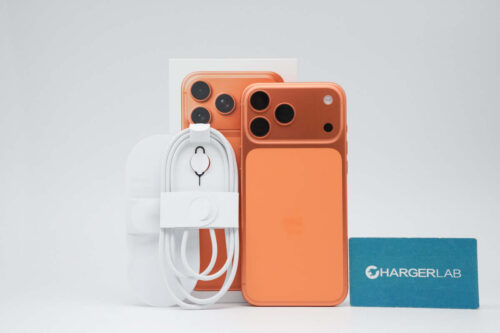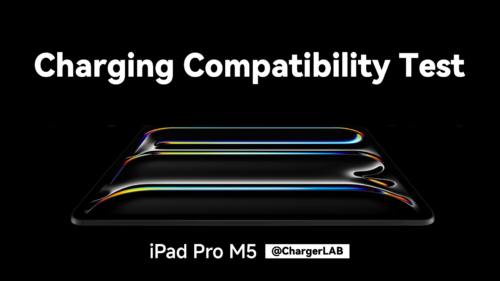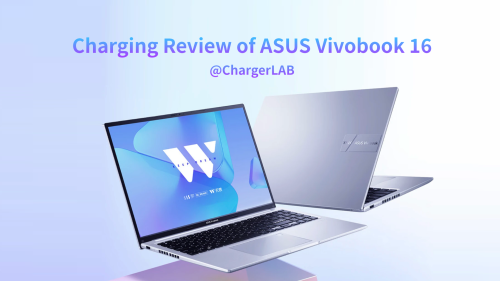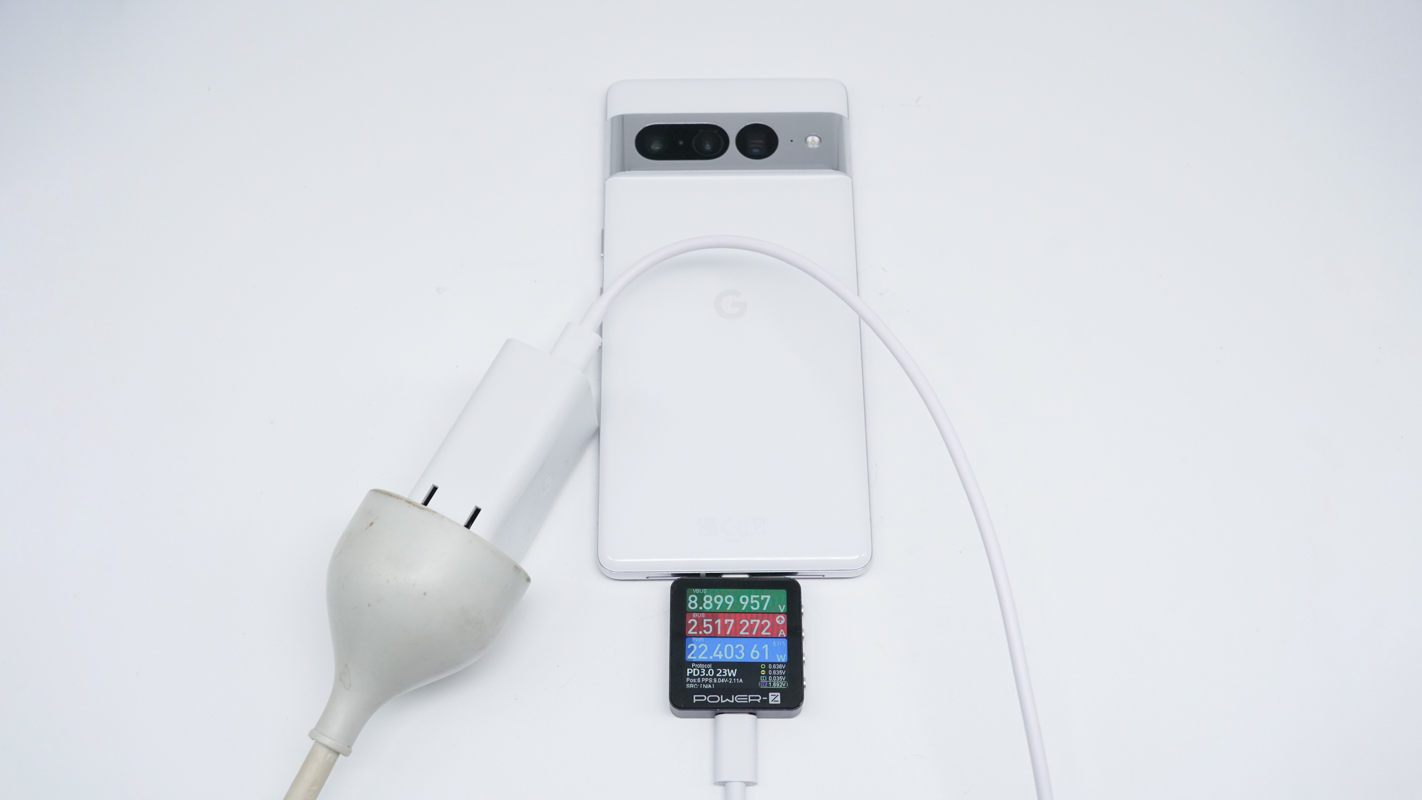Introduction
The Pro line has long been synonymous with high performance in Apple’s product family, and since its introduction, the Pro Max series has carried a unique and important mission. It represents not only Apple’s highest-end offering, but also the model used to define flagship smartphone standards and push the boundaries of industry technology.
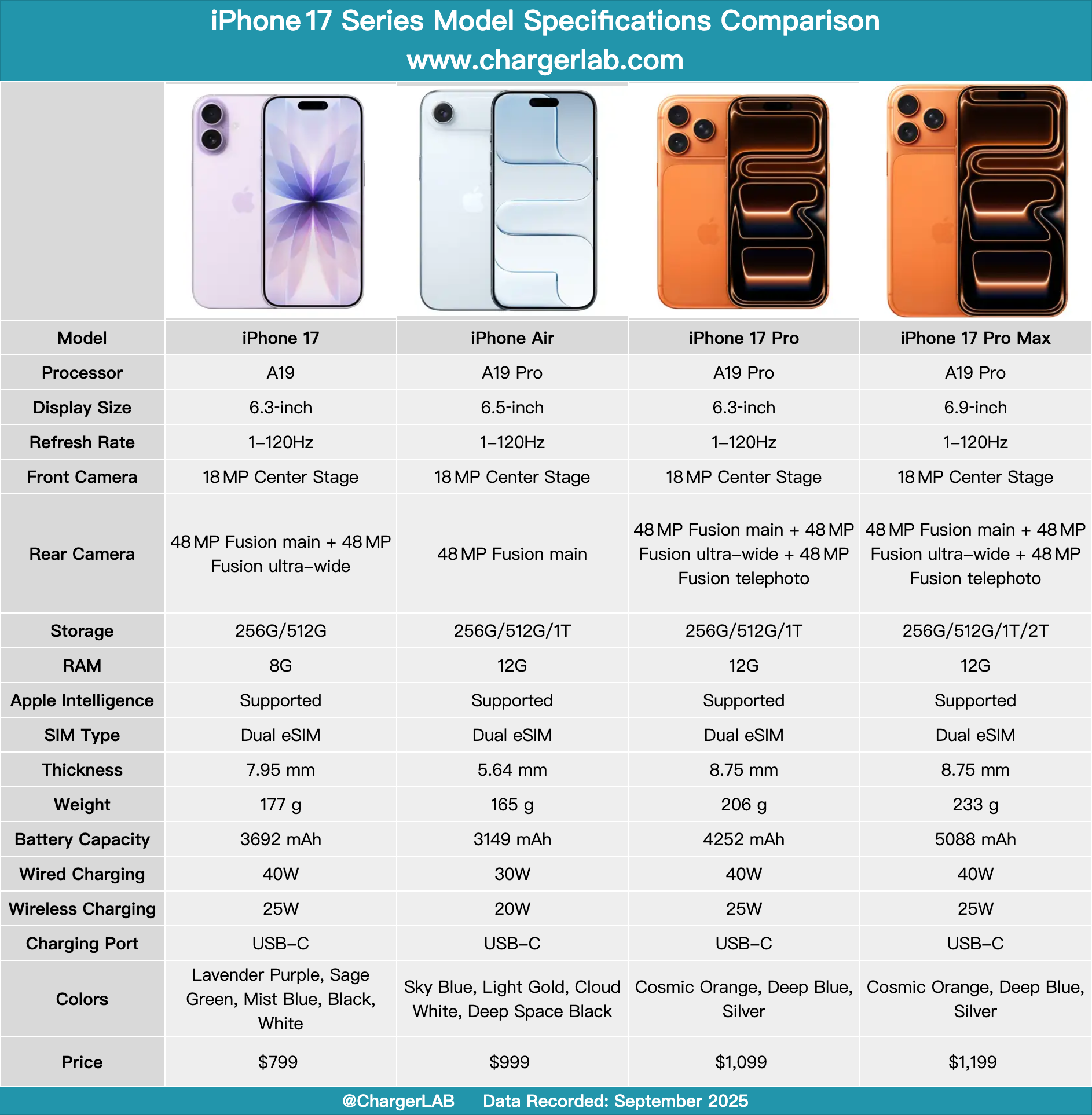
This year’s iPhone brings a major upgrade. Beyond the new A19 Pro processor, it adopts a unibody aluminum chassis and relocates the motherboard to the Dceo section, creating additional space for a larger battery. Apple has also introduced VC liquid cooling for improved thermal performance. The front camera now features an 18-megapixel Center Stage system, making it more suitable for creators. Let’s take a closer look at how this generation of iPhone performs.
Product Appearance

The iPhone 17 Pro Max packaging continues Apple’s familiar design language, and the unit we got is the Cosmic Orange color option.

The back of the box uses a tear-strip paper seal that cannot be restored once pulled open.
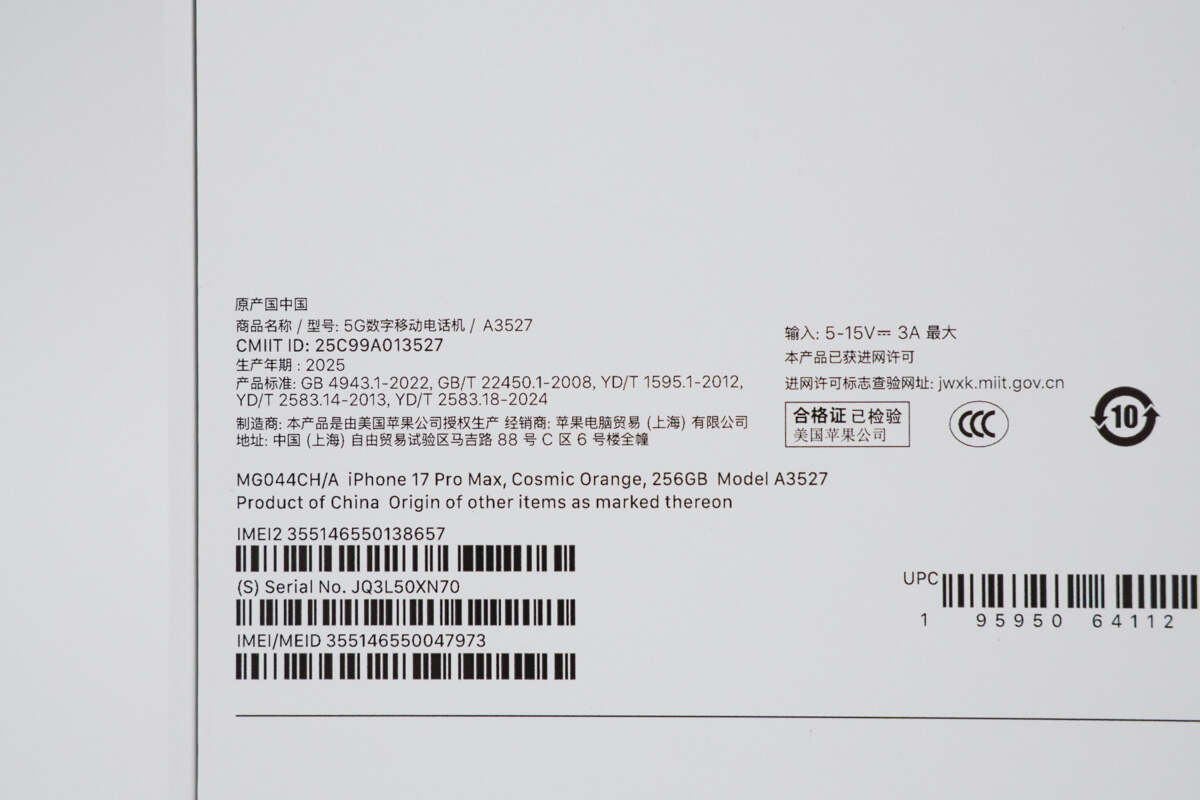
A close-up of the specification label shows that the device has passed CCC certification.
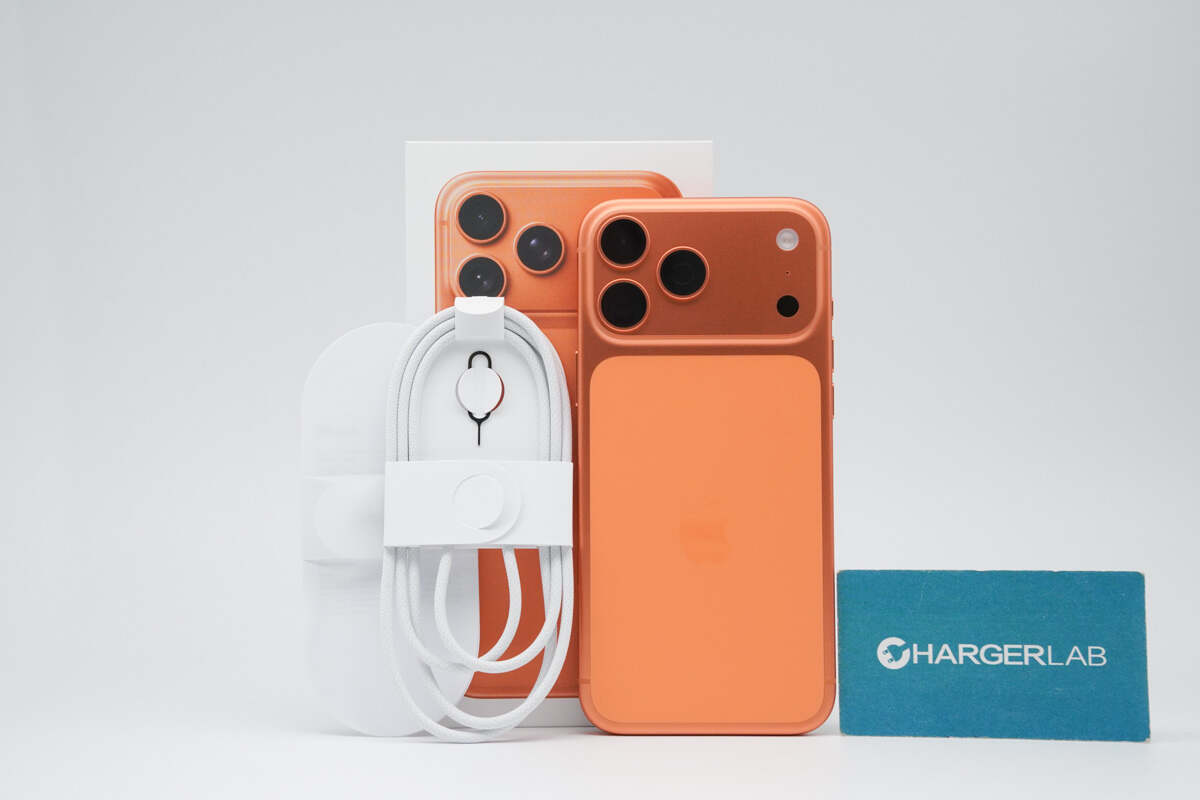
The box contains the phone, cable, and some documents.
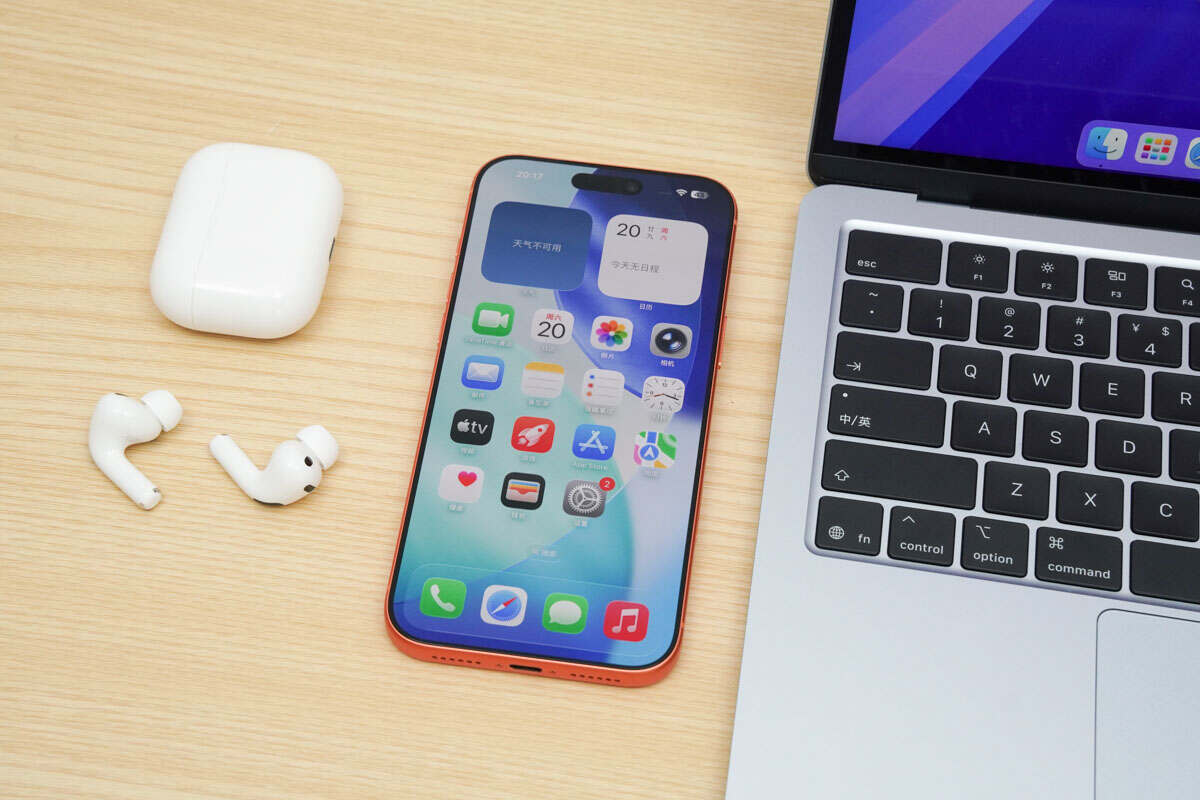
The iPhone 17 Pro Max uses a second-generation Ceramic Shield front panel and adds an anti-reflective coating, which significantly improves image contrast in bright environments.
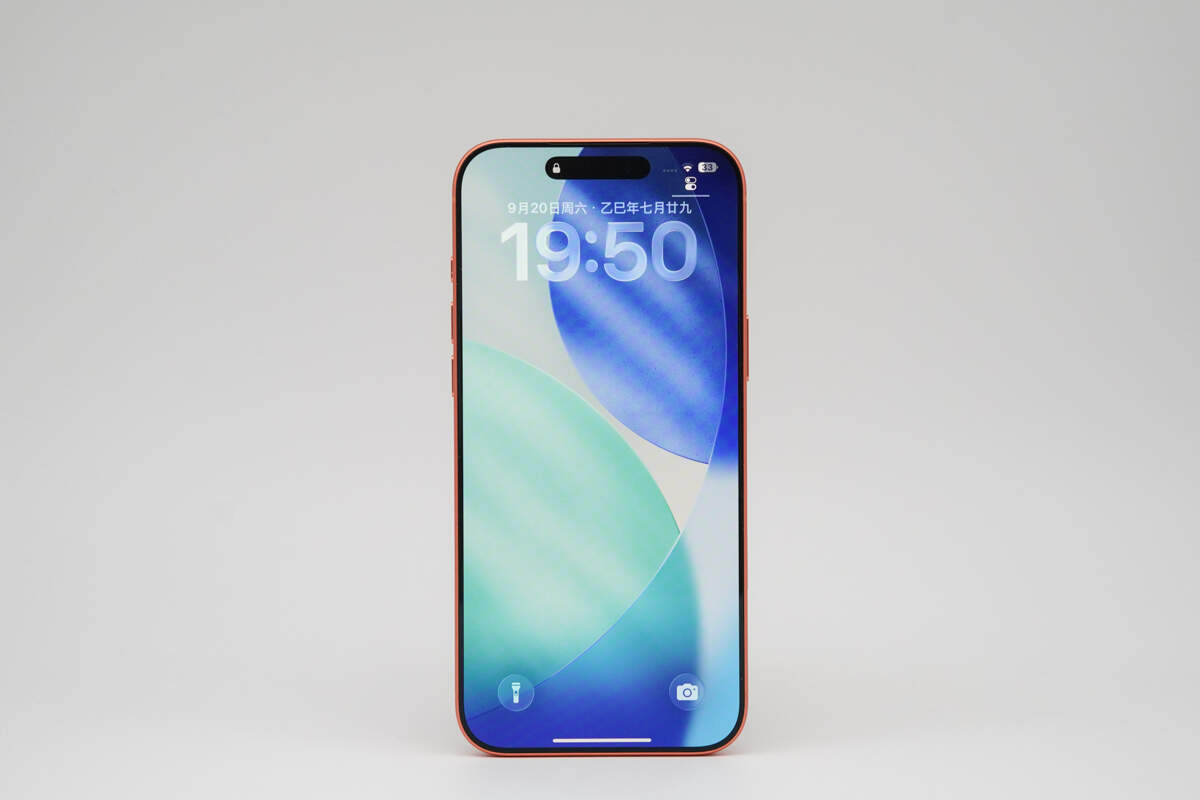
The iPhone 17 Pro Max features a 6.9-inch Super Retina XDR all-screen OLED display, supports ProMotion adaptive refresh rates up to 120 Hz, and has a typical maximum brightness of 1,000 nits, an HDR peak brightness of 1,600 nits, and an outdoor peak brightness of 3,000 nits.

The iPhone 17 Pro Max abandons its previous titanium frame in favor of a unibody aluminum-alloy design. Compared to the straight-edge frame, this gives a noticeably more comfortable grip.
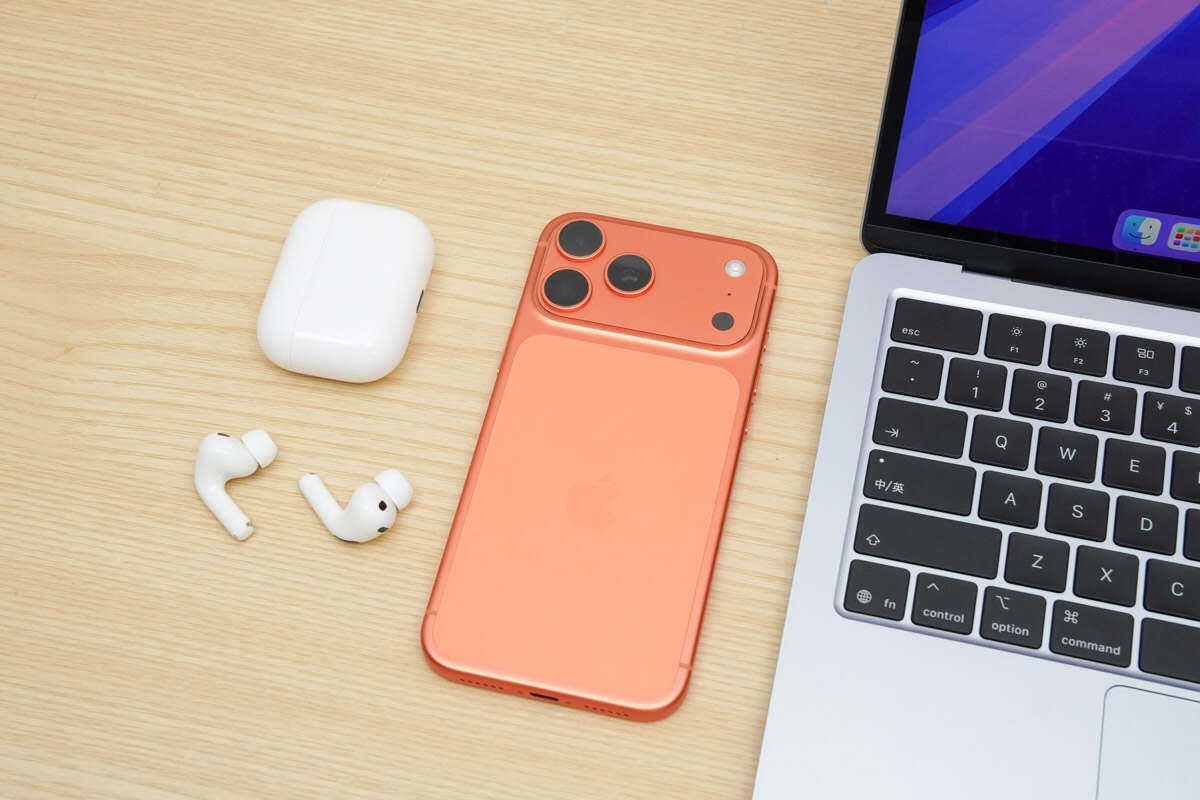
The back features a hybrid design combining aluminum alloy and a glass panel. The glass panel also uses Ceramic Shield material, offering improved drop and scratch resistance, and the Apple logo has been relocated to the center of the glass back.
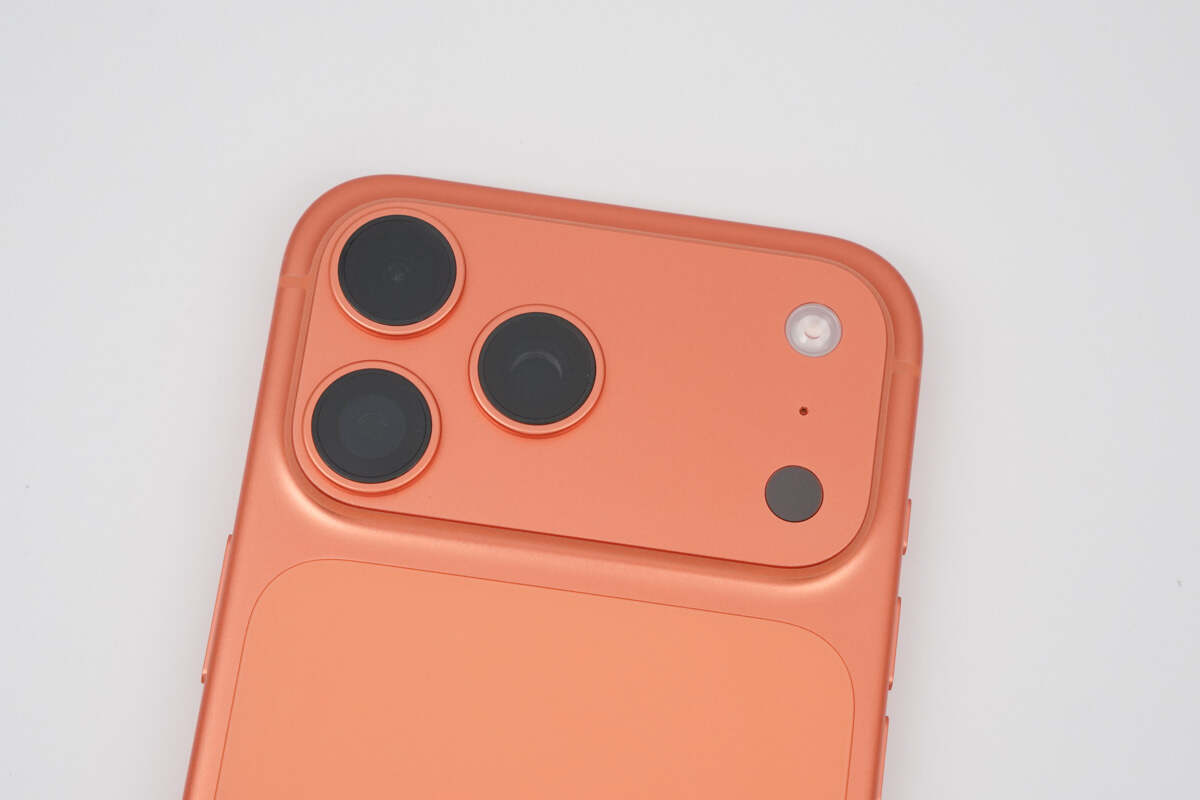
The camera module adopts an all-new DECO design, moving the LiDAR sensor, flash, and microphone to the right side. The triple-camera system consists of a 48‑megapixel Fusion main camera, a 48‑megapixel ultra-wide camera, and a 48‑megapixel Fusion telephoto camera, all covered with sapphire glass.
The motherboard has been relocated to this raised section, equipped with the A19 Pro processor, and features liquid cooling for the first time. A VC heat spreader is integrated into the back panel area, making this arguably the most efficient cooling system ever in an iPhone.
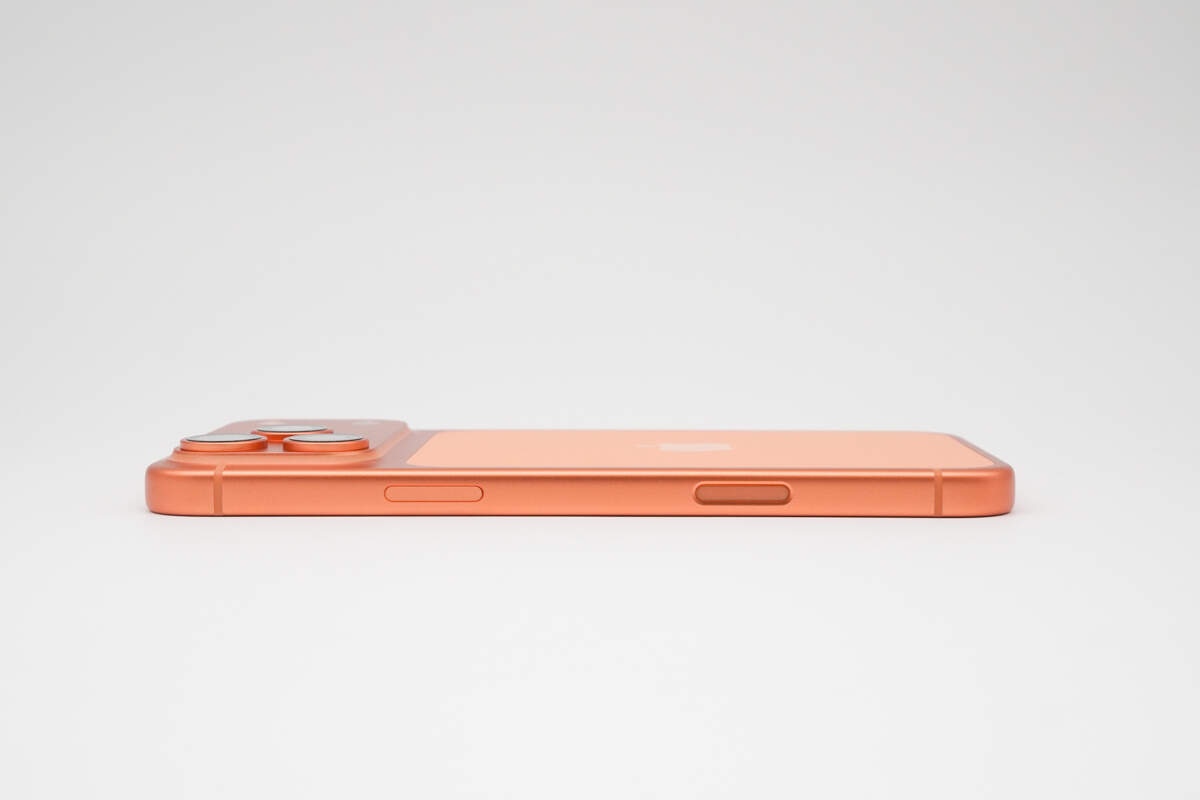
The right-side frame houses the power button and a dedicated camera control button.

The left-side frame features the customizable button, volume buttons, and SIM card tray, largely unchanged from the iPhone 16 series.
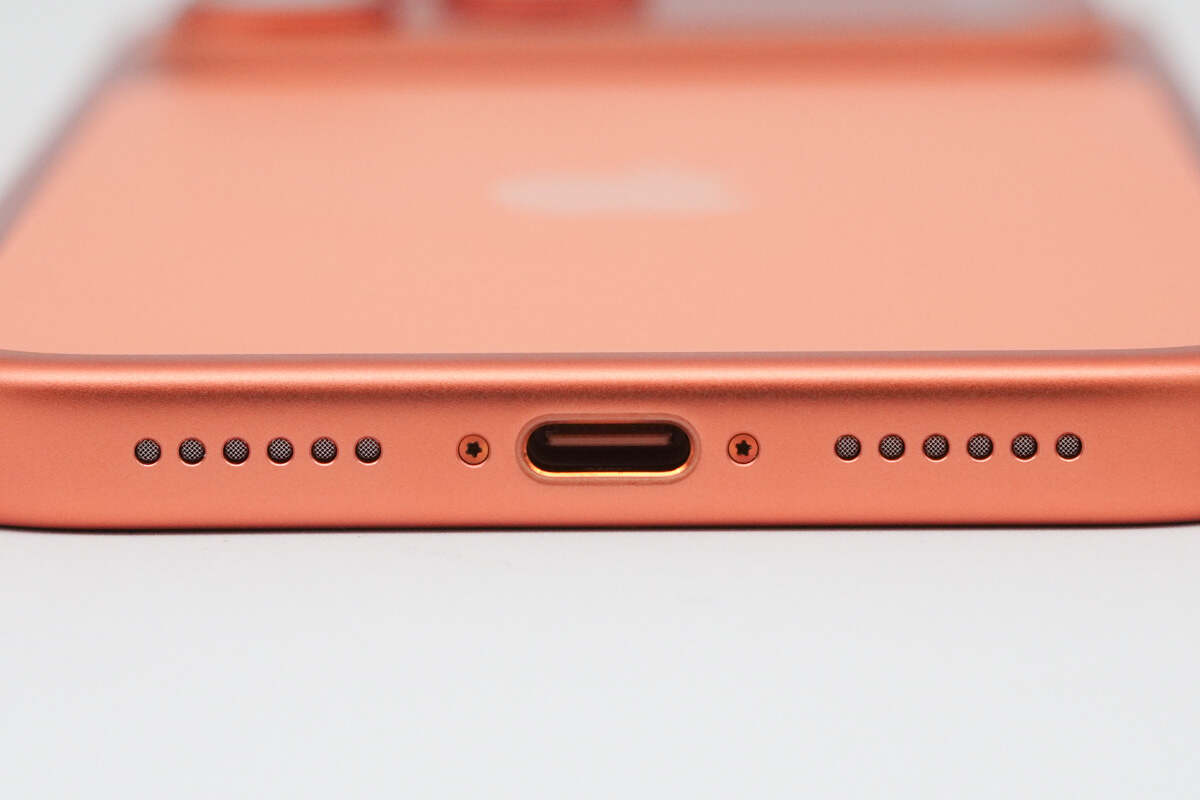
The bottom of the phone features a USB‑C port, supporting USB 3.2 Gen 2 data transfer speeds of up to 10 Gb/s, with speaker grilles on either side of the port.
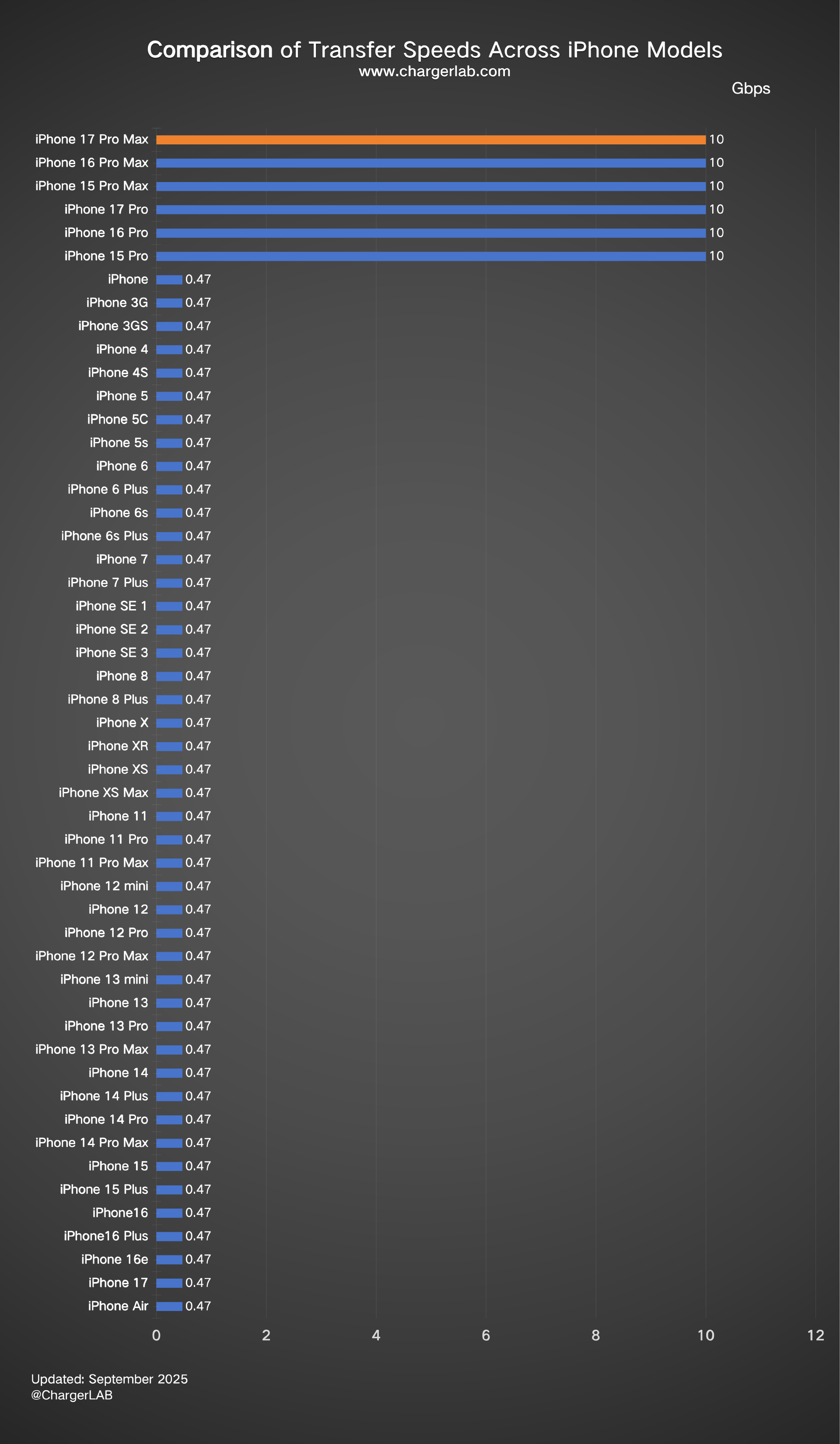
According to official data, starting with the iPhone 15 series, iPhones feature a USB‑C port, with Pro models upgraded to USB3, achieving data transfer speeds of up to 10 Gbps. Similarly, the iPhone 16 Pro and 17 Pro series follow the same standard, while the other models remain at USB 2.0 (480 Mbps).
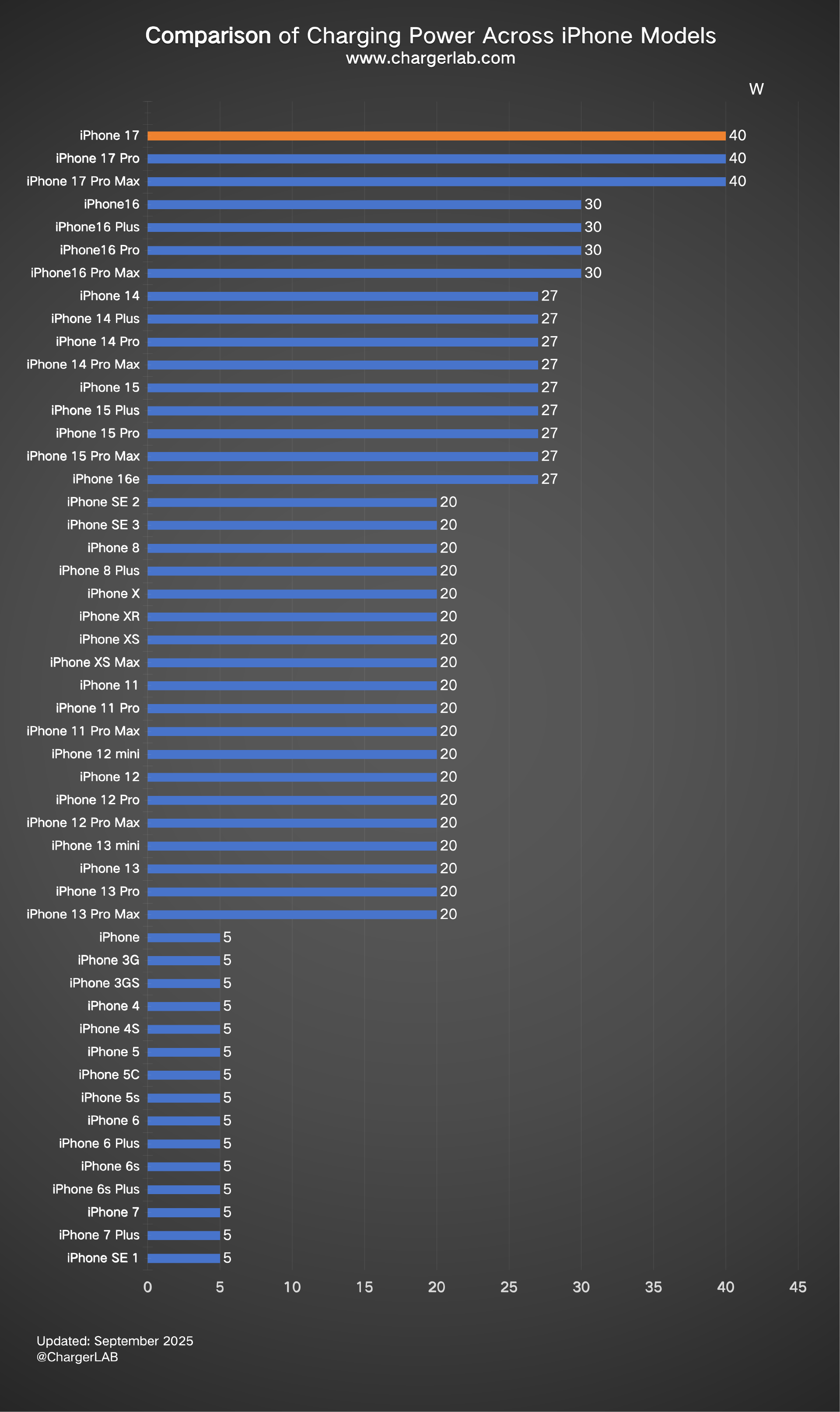
Test data shows that the iPhone 17 series supports wired charging power of up to 40 W.
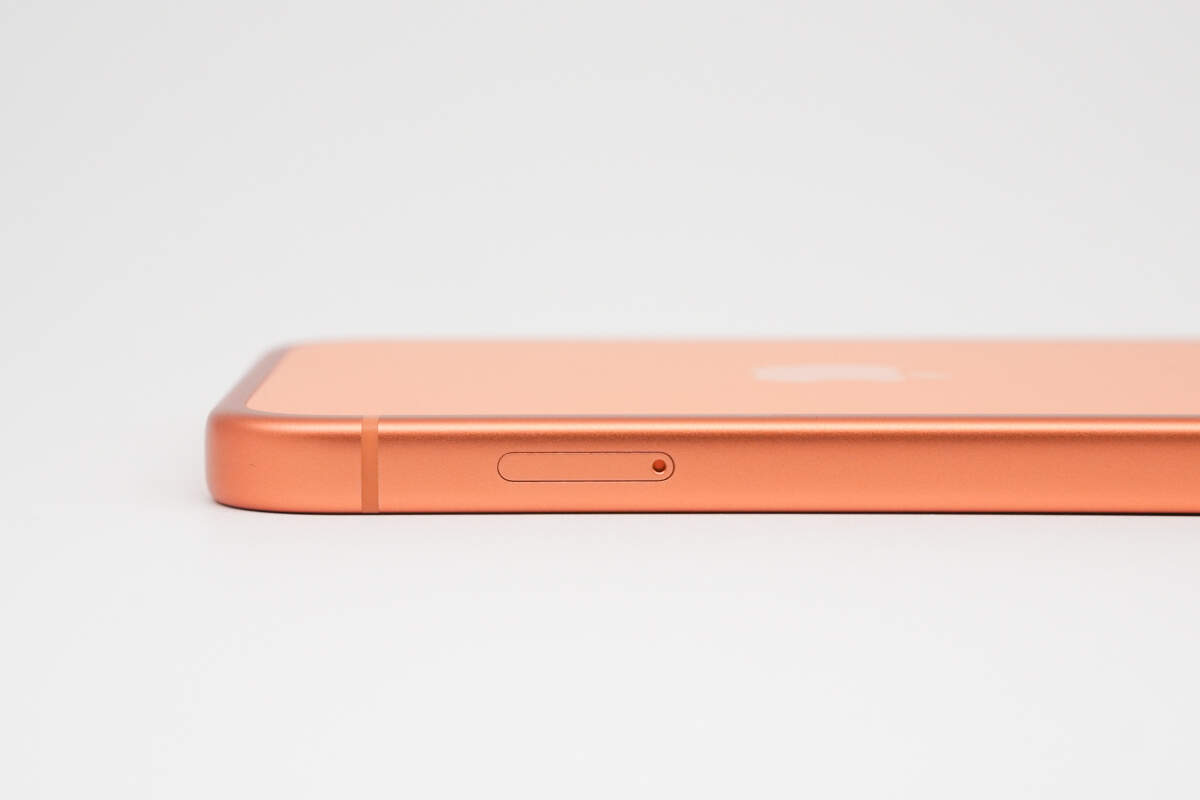
Although the unibody aluminum-alloy chassis is not as hard as the previous titanium frame, it offers a better experience in terms of heat dissipation and overall feel.
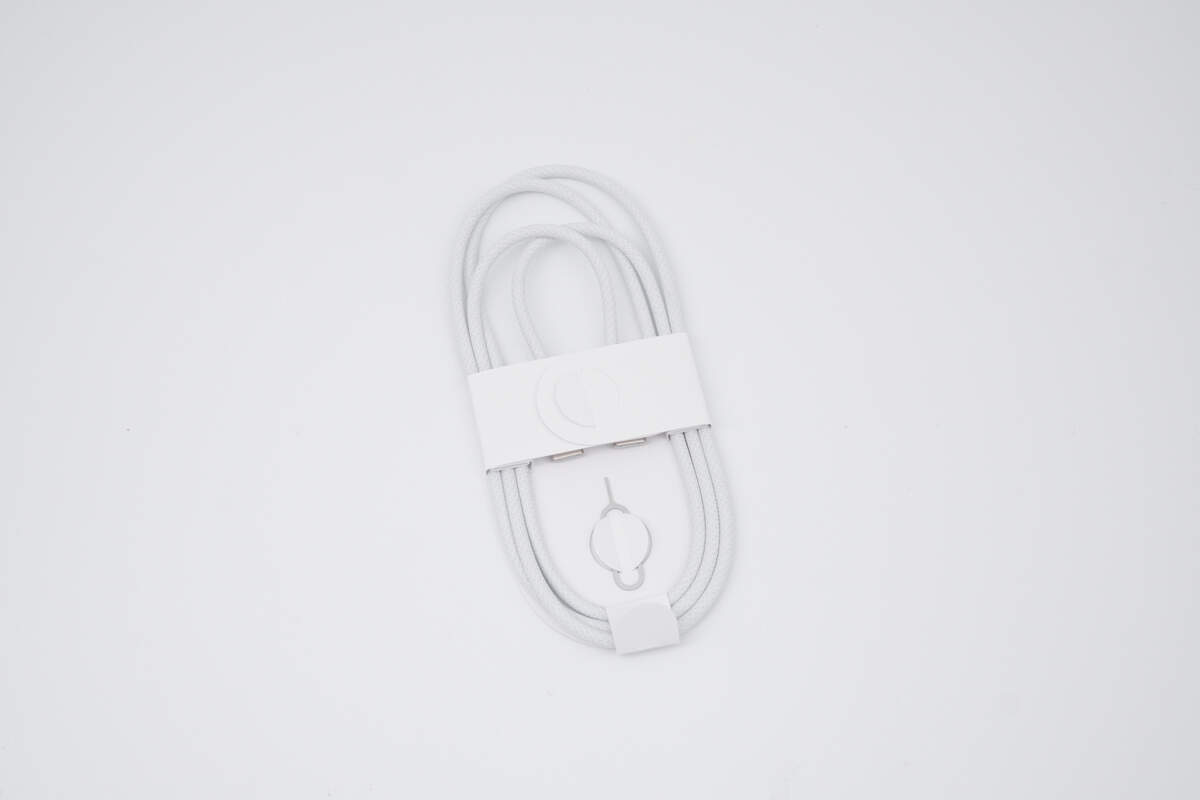
This is the included USB-C cable.
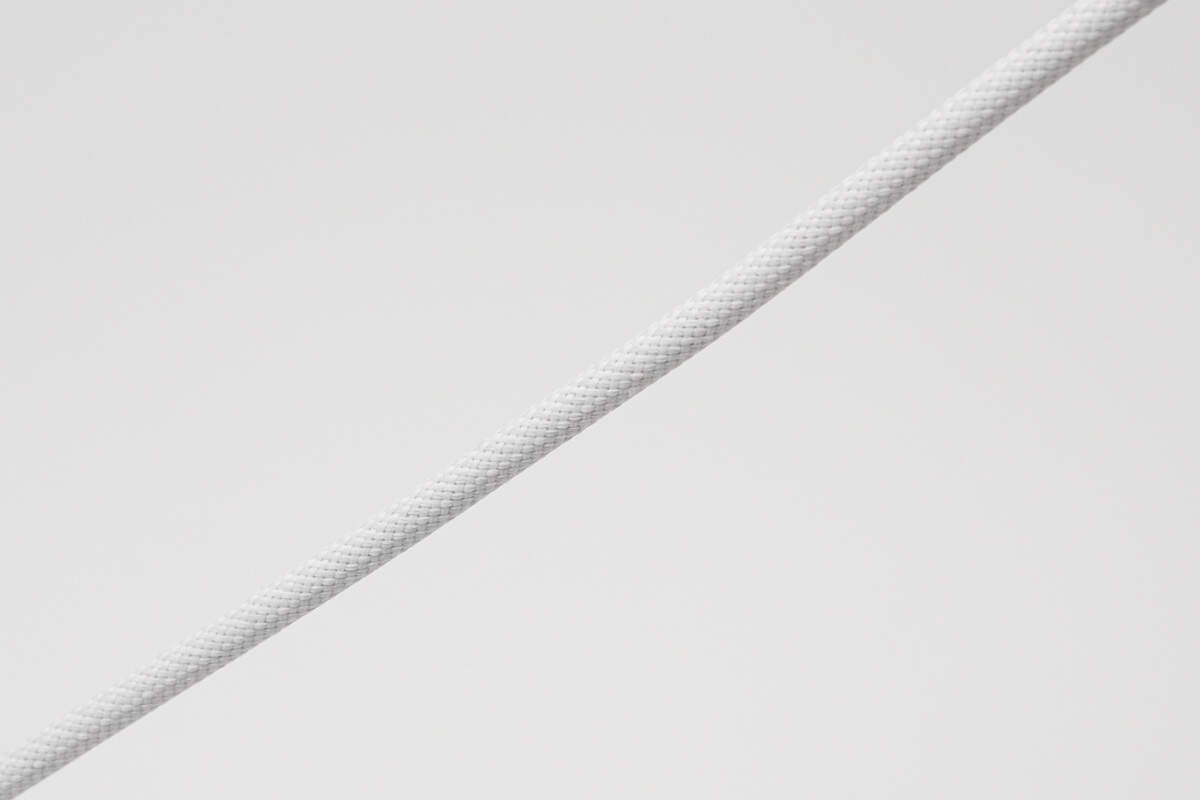
Consistent with previous series cables, the woven outer layer twists the fibers into strands before arranging and weaving them together, preventing tangling and enhancing durability.

And the connector adopts a special pin design.

ChargerLAB POWER-Z KM003C shows it doesn't have an E-marker chip.
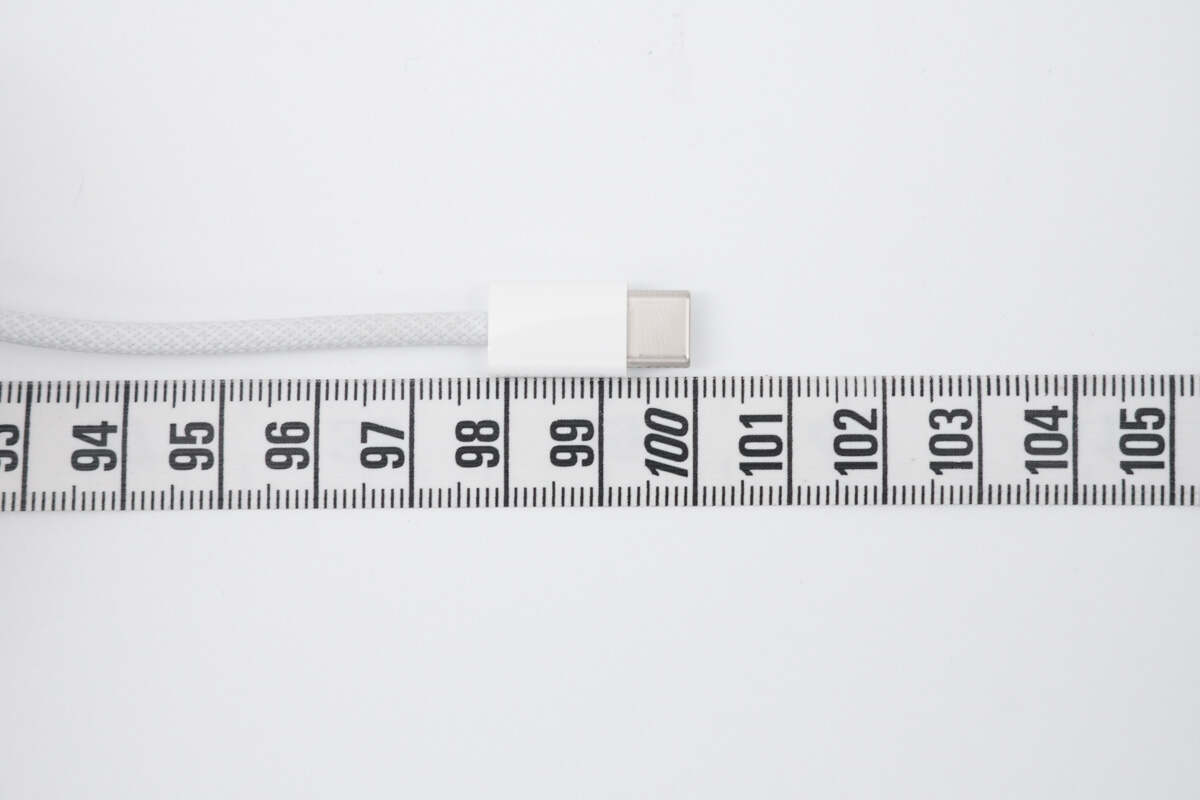
The length of this cable is exactly 1m (3' 3.37'').

The length of the phone is about 163.48 mm (6.44 inches).
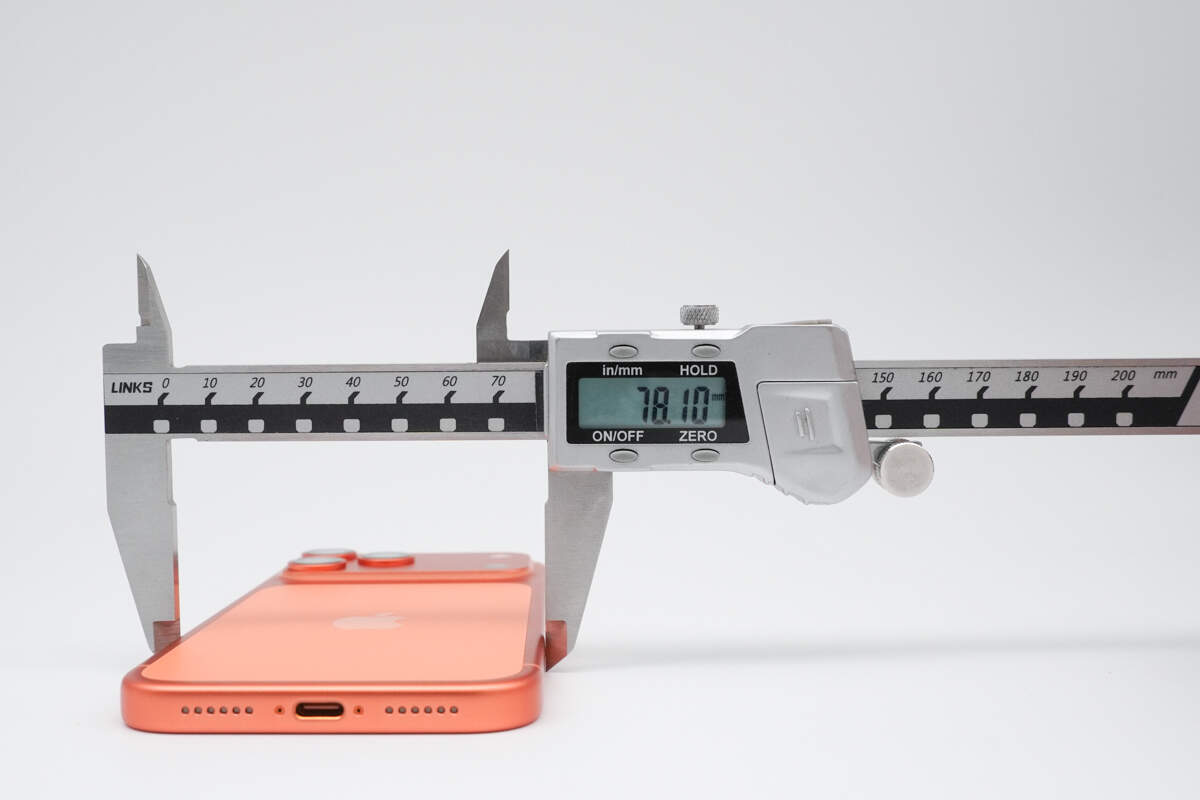
The width is about 78.1 mm (3.075 inches).
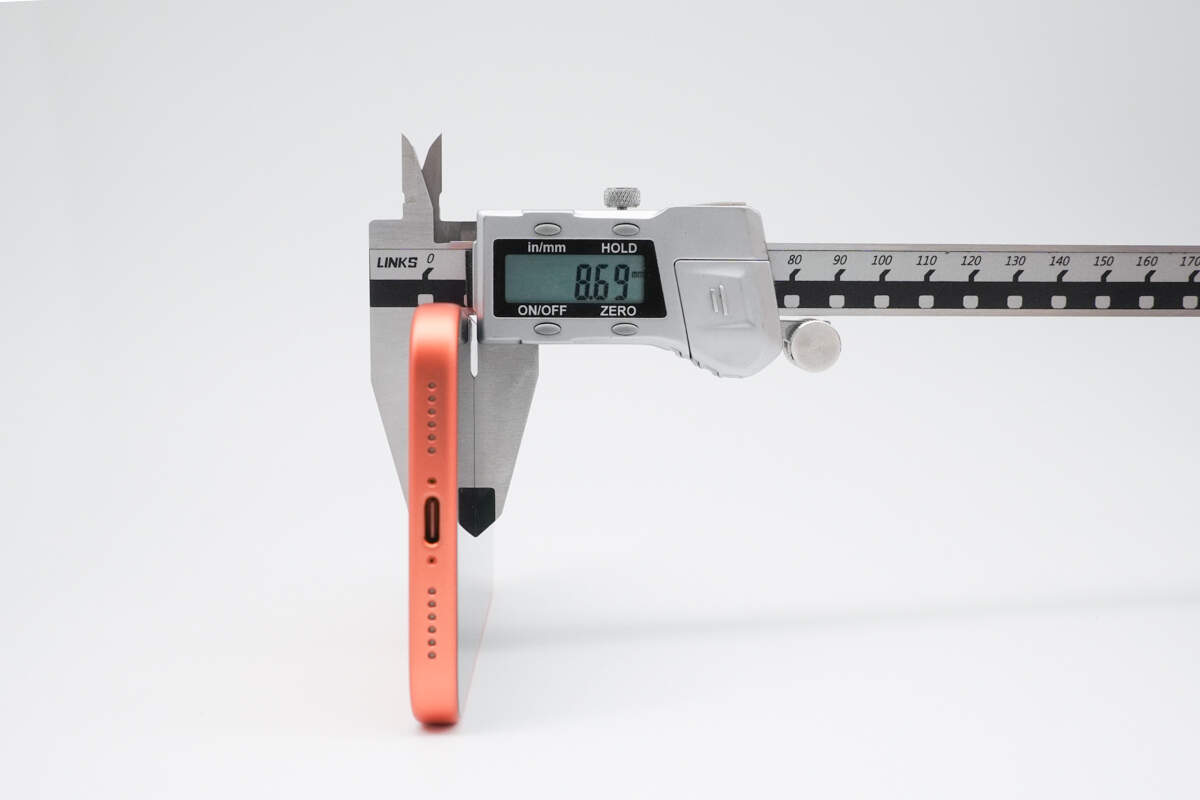
The thickness is about 8.69 mm (0.34 inches).

On the left is the iPhone 16 Pro Max, and on the right is the iPhone 17 Pro Max; the two models are similar in size.
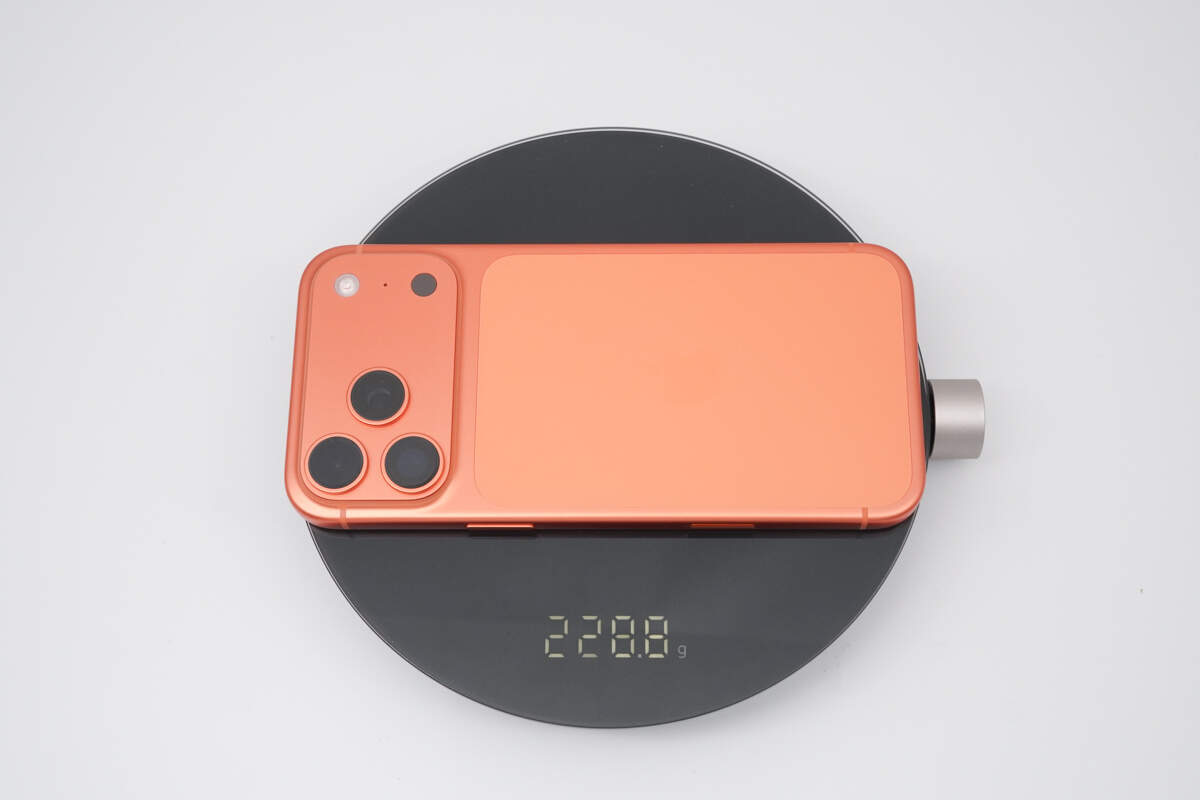
The weight is about 228.8 g (8.071 oz), which is slightly heavier than the iPhone 16 Pro Max.
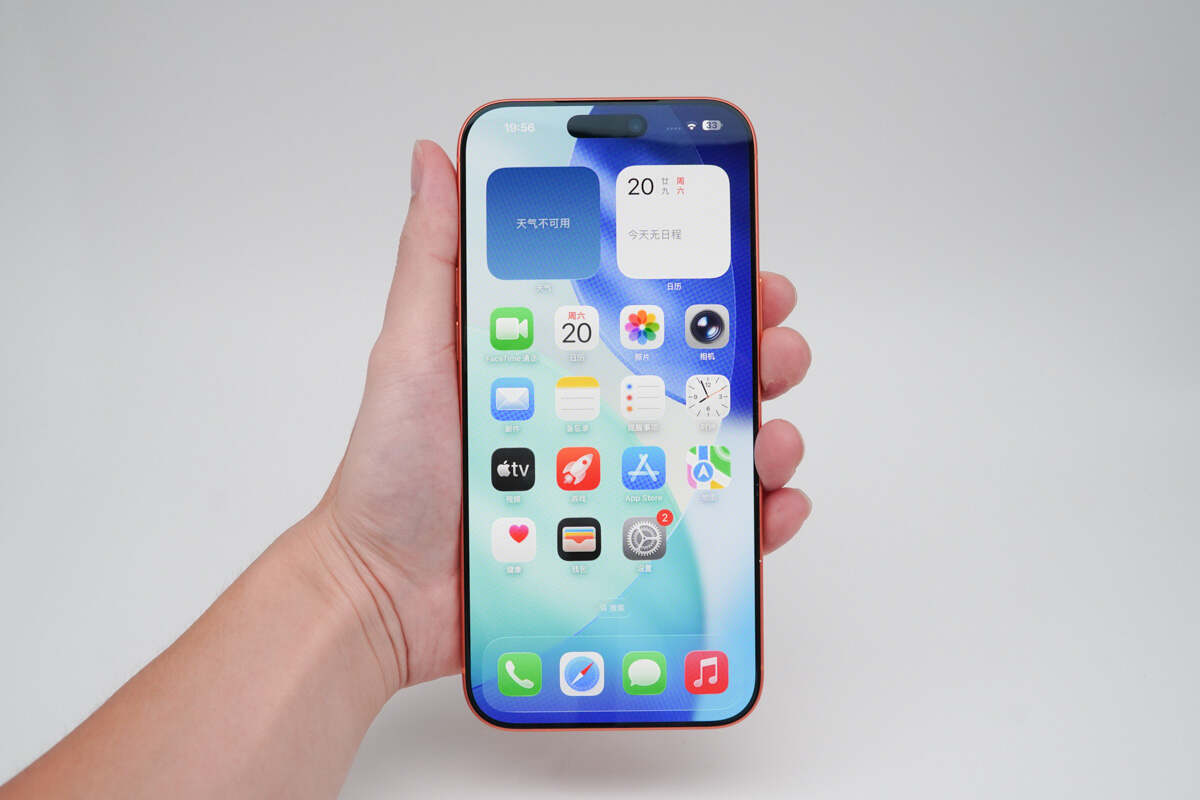
That's how big it is in the hand.
Compatibility Test
Next, let's see its charging compatibility.
Original Chargers
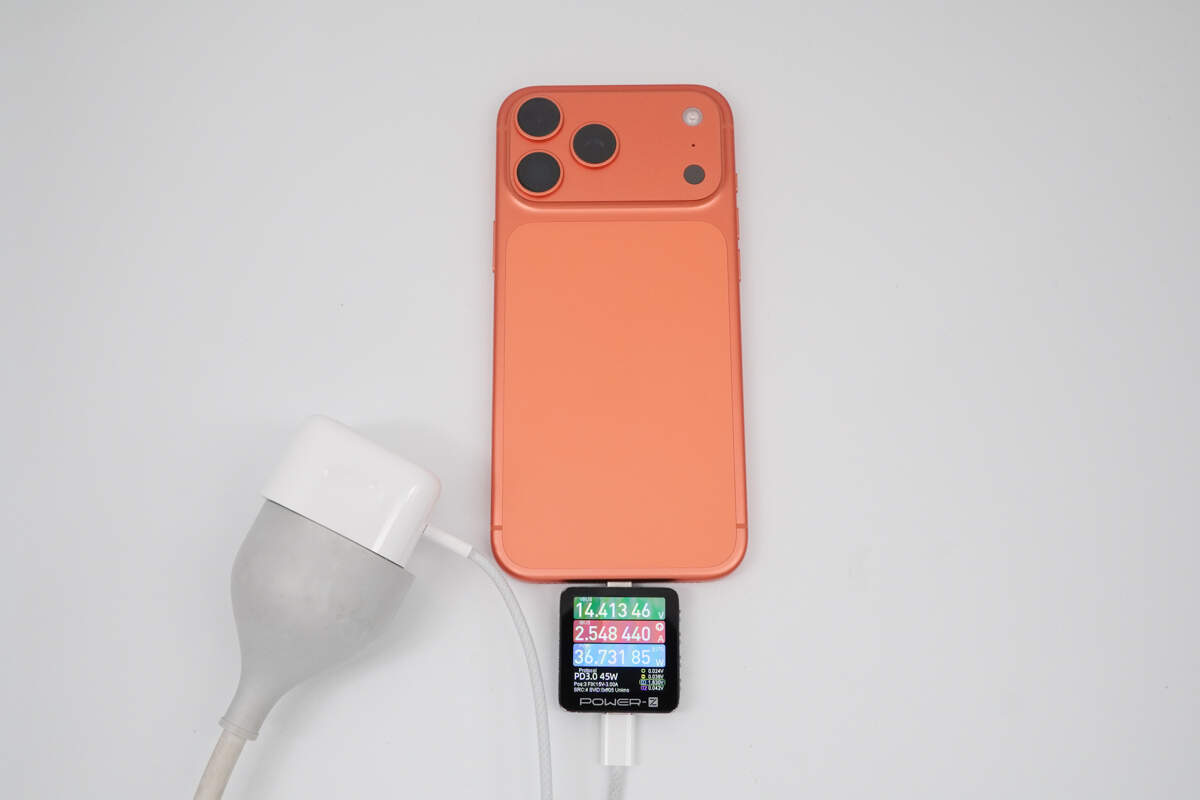
Using the Apple 40W Dynamic Adapter (A3365) to charge the phone, the peak power reaches 14.41V 2.55A, 36.73W.
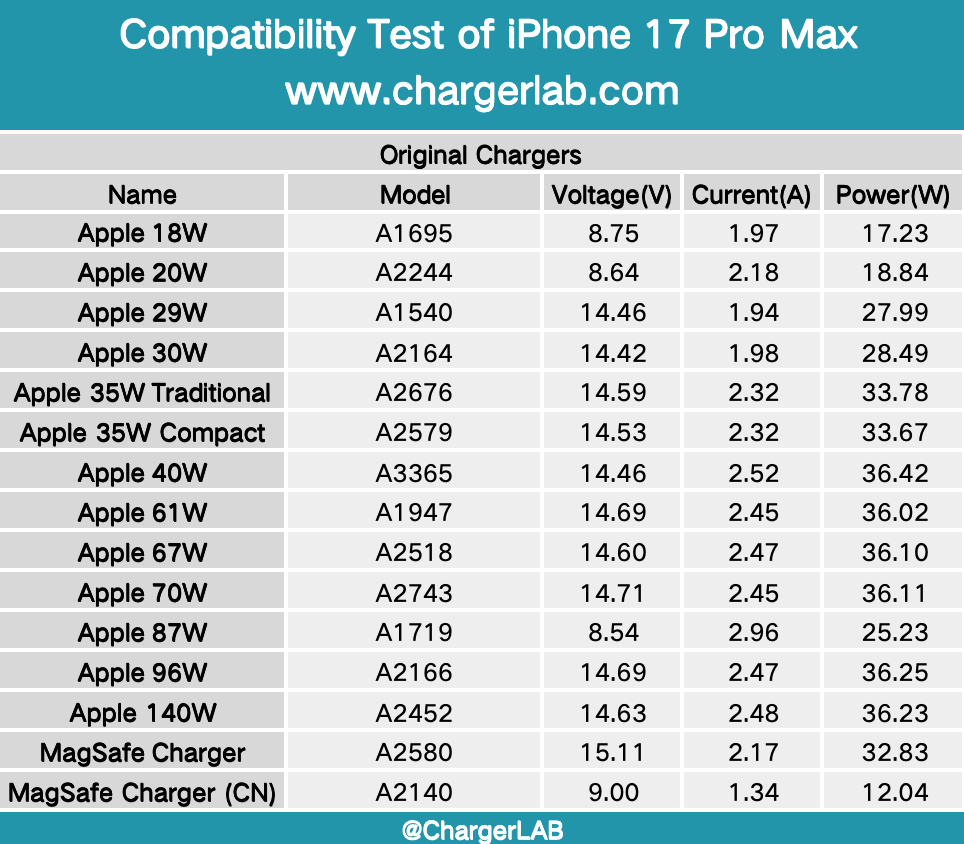
The voltage is similar to the previous generation. The maximum charging power reaches around 36W, and without a 15V adapter, the voltage defaults to 9V.
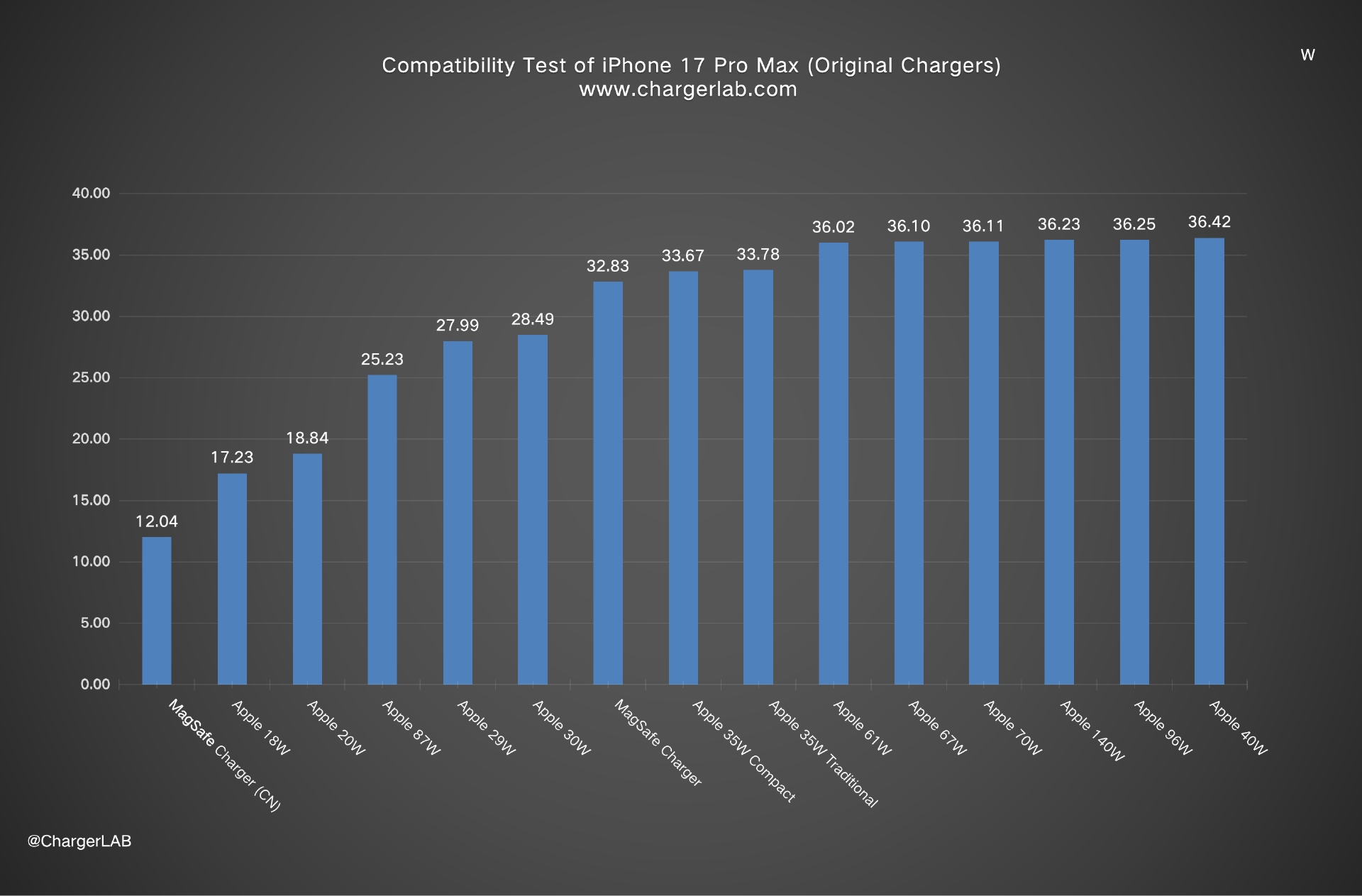
Plot the data as a bar chart. The highest charging power is Apple's 40W (36.42W).
Third-party Chargers
We also used a variety of third-party chargers with the original cable during the test. Let’s take a look at the results.
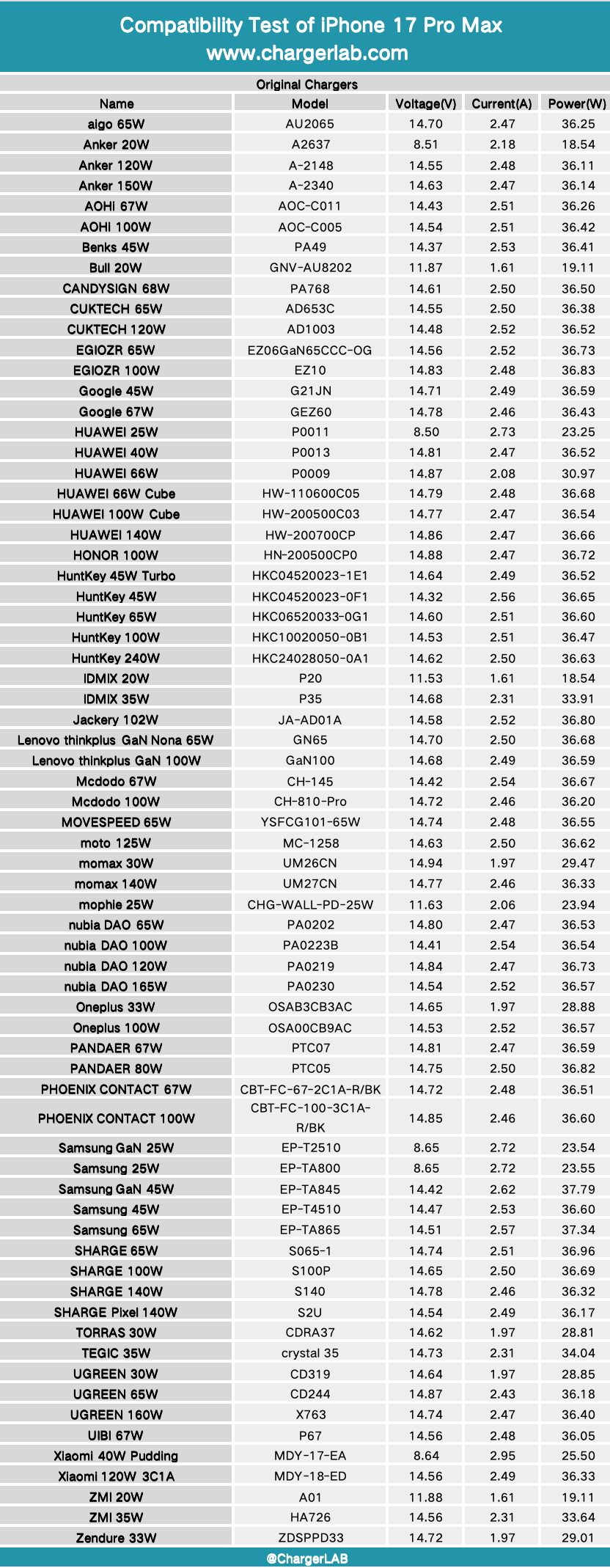
There are no compatibility issues.
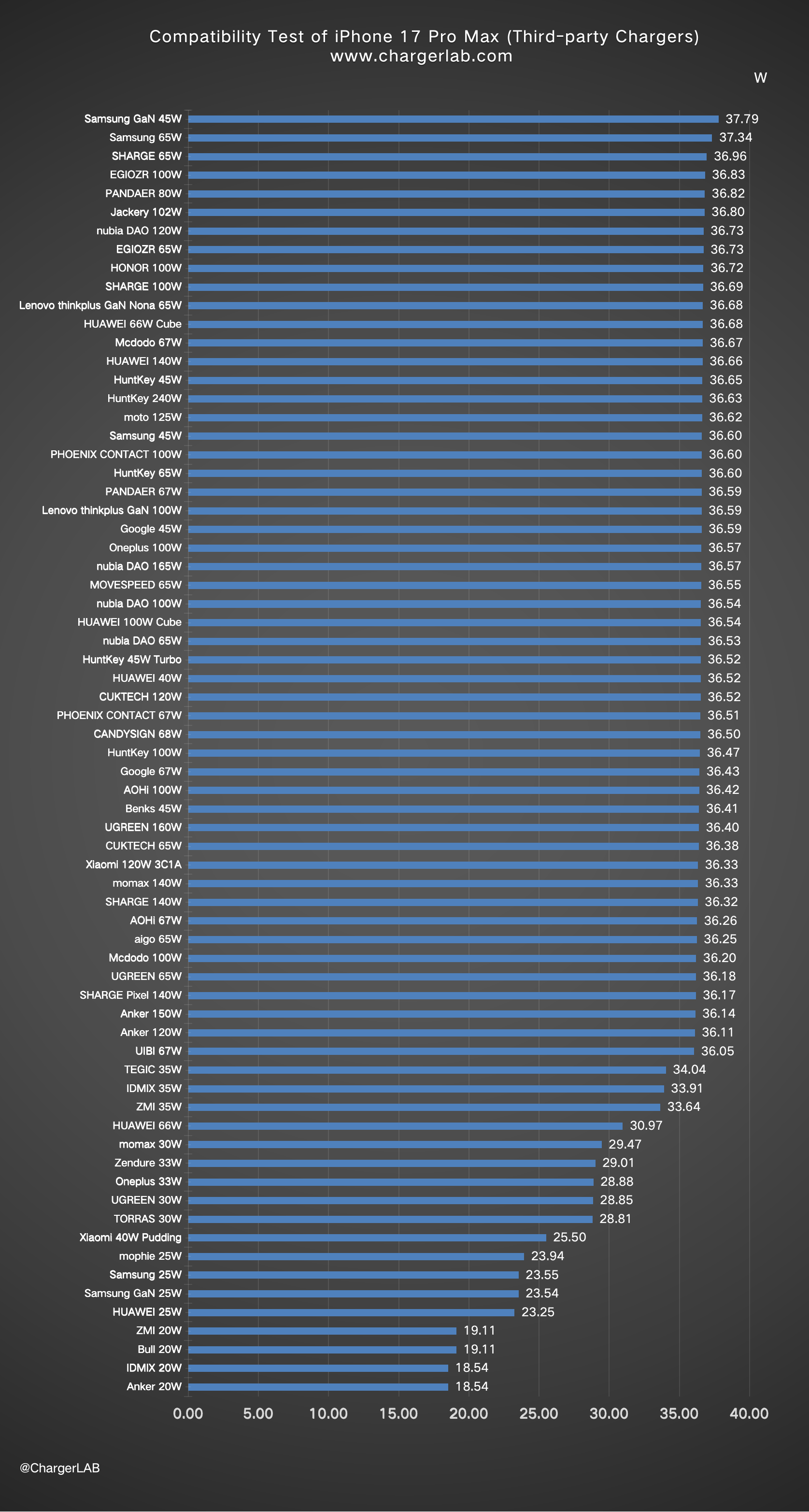
Most chargers can reach a charging power of 36W, demonstrating impressive compatibility.
Power Banks
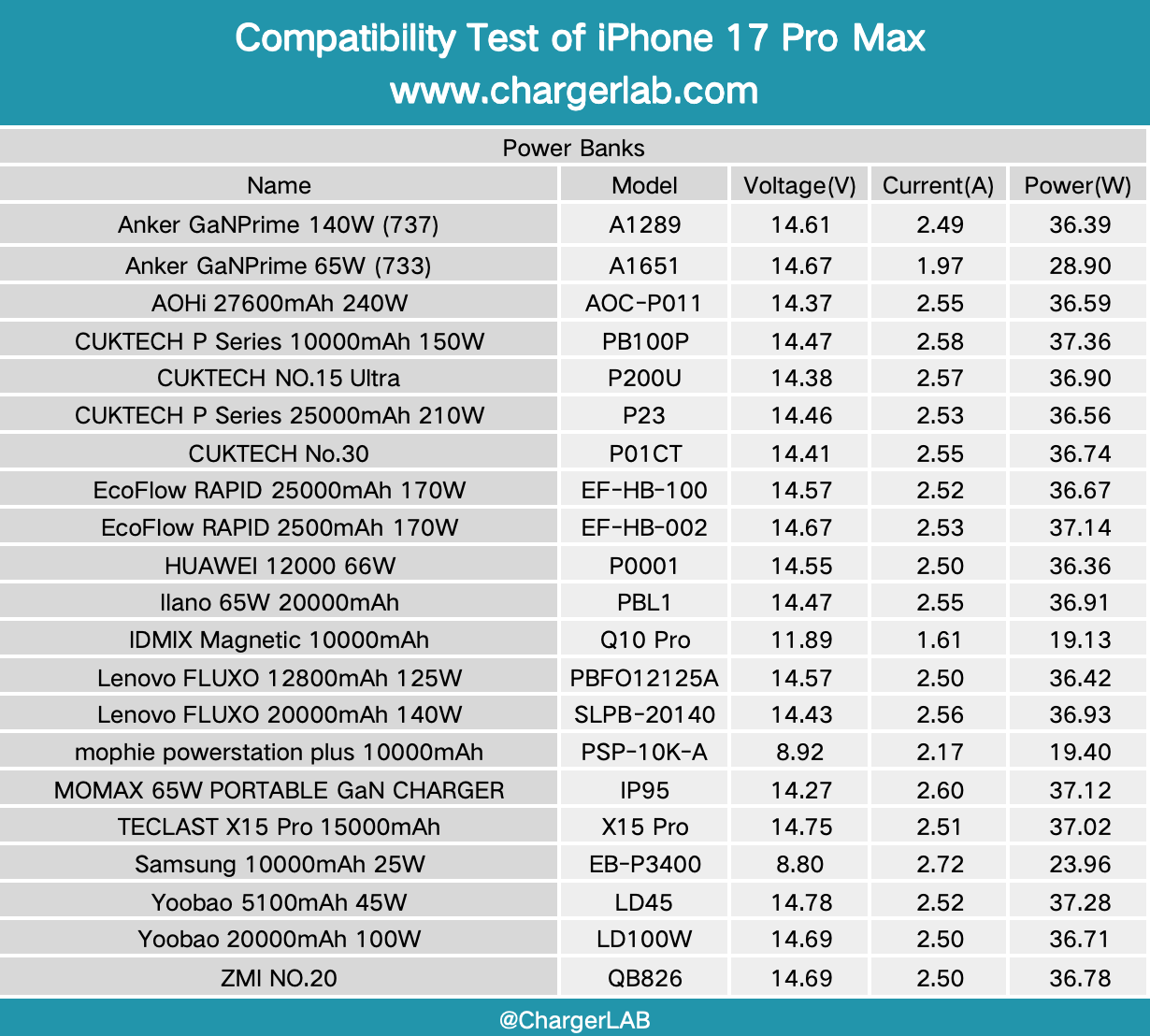
Most of them reach 15 V, with a current around 2.5 A, allowing the power to generally exceed 36 W.

We summarize the test results into a bar chart. The highest charging power is achieved by the CUKTECH P Series 10000 mAh 150W at 37.36W, followed by the Yoobao 5,100 mAh 45W at 37.28W, both activating the PD protocol. Most power banks can deliver over 36W.
Wireless Charging Test
It's worth noting that the iPhone 17 Pro Max, in addition to supporting the existing MagSafe charging, also supports the Qi2 wireless charging standard.
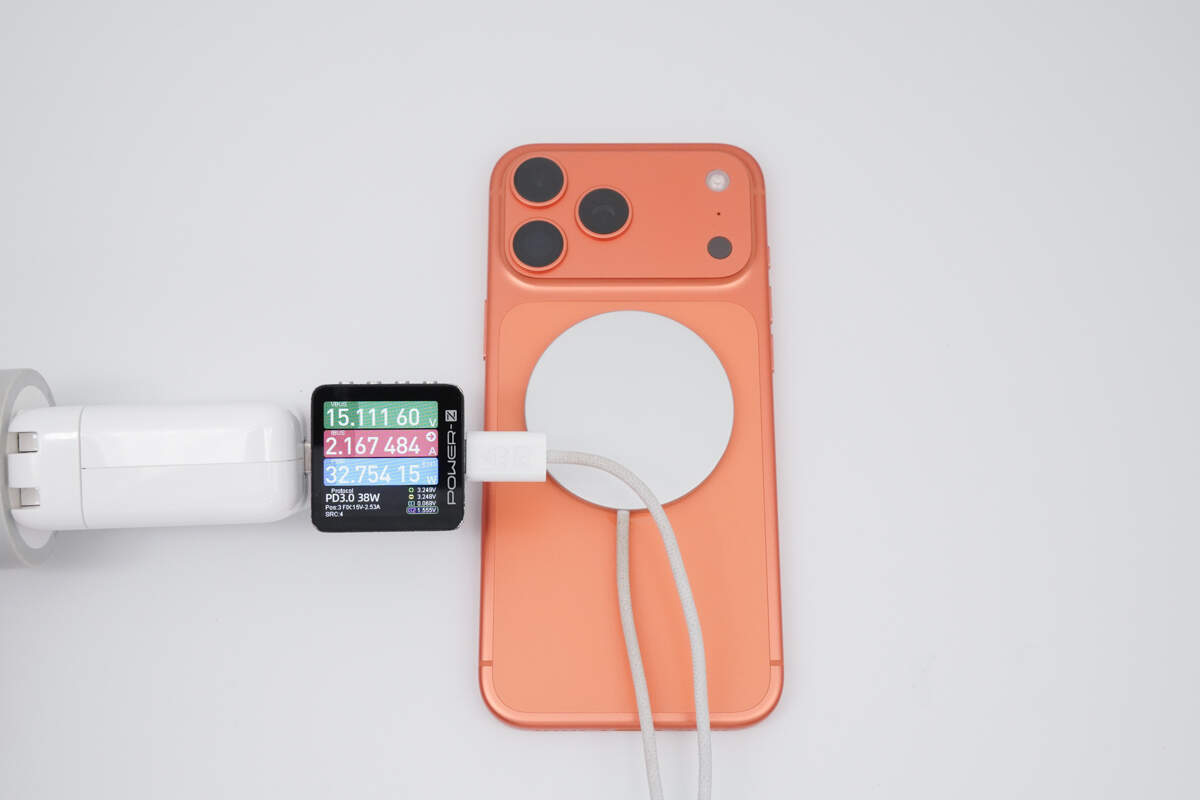
When charging the iPhone 17 Pro Max with the Apple MagSafe Charger, the power at the phone end is about 15.11V 2.17A 32.75W.
Reverse Charging Test
The iPhone 17 Pro Max has a reverse charging function, allowing it to charge several devices.
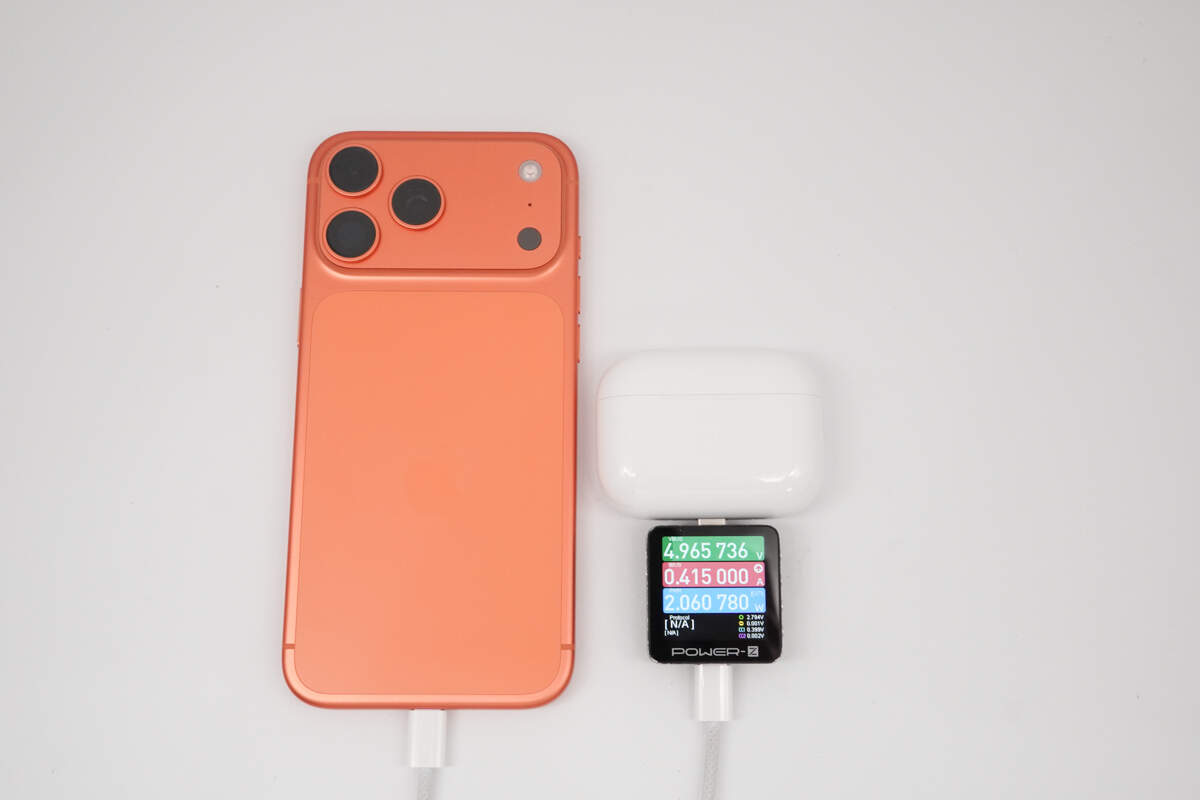
Use the included dual USB-C cable to connect the iPhone 17 Pro Max and AirPods Pro. You can see that the earphone charging indicator lights up. The measured output power on the phone is 4.97V 0.42A 2.06W.
Full Charging Test
Next, we'll use the Apple 40W Dynamic Adapter to fully charge the iPhone 17 Pro Max. And put them into a 25°C (77℉) thermotank throughout the test.

The voltage is around 15V at first, and the charging curve can be divided into seven parts. In the first part, the peak power stayed at 37W for the first 8 minutes. Then, the power gradually drops to 31W, 30W, 25W, 15W, and 9W in turn. The final part begins at 59 minutes, and the power slowly drops to almost zero. The voltage dropped to 5V at about 1 hour and 3 minutes. It takes 1 hour and 31 minutes to be fully charged.
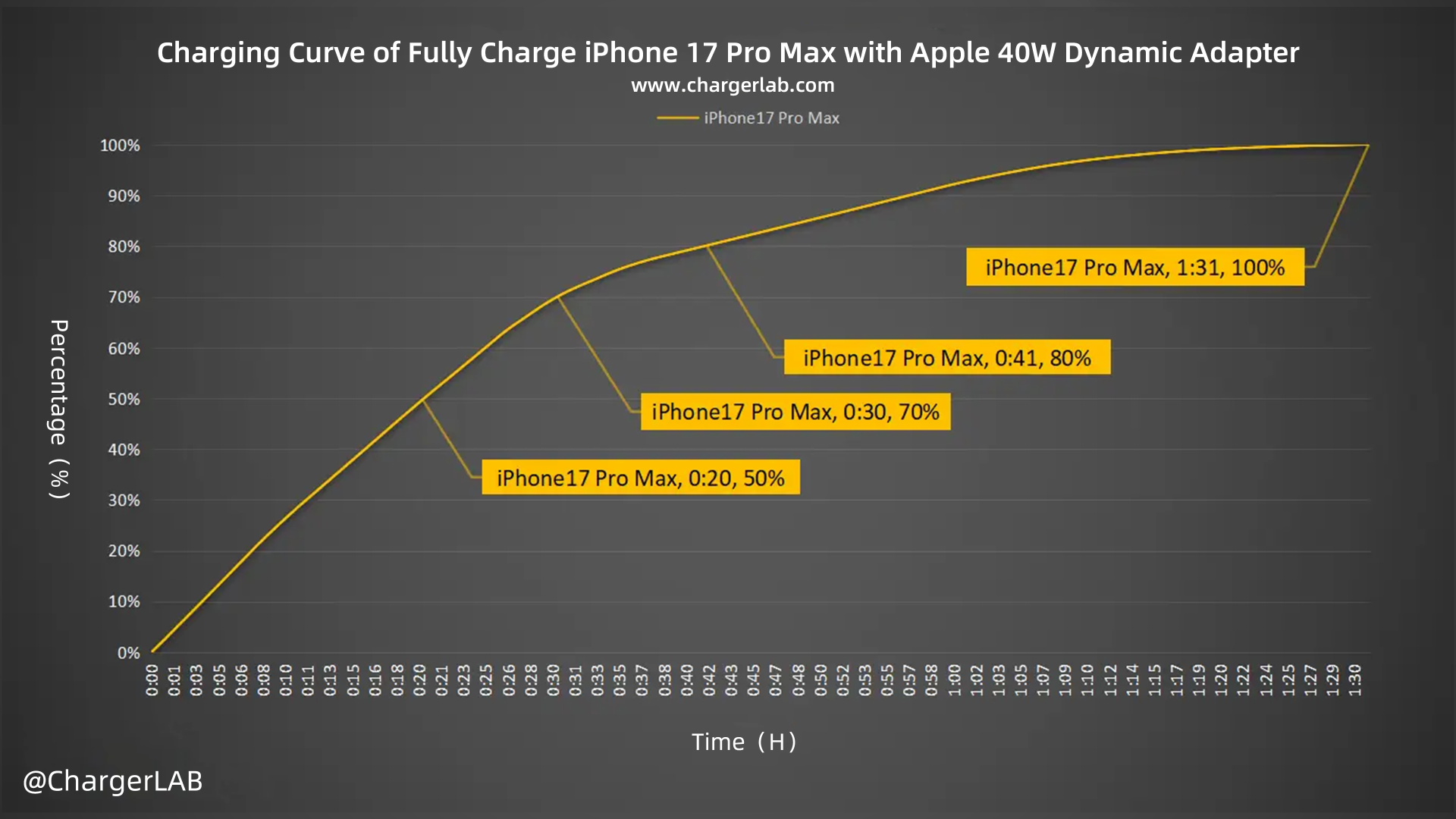
We also turn it into another curve. The charger can charge the iPhone 17 Pro Max to 50% in 20 minutes. It hits 70% at the 30-minute mark, reaches 80% in 41 minutes, and takes 1 hour 31 minutes to fully charge.
We also tested the full charging curve of the iPhone 17 Pro Max with Apple 20W, 70W, and 140W chargers.
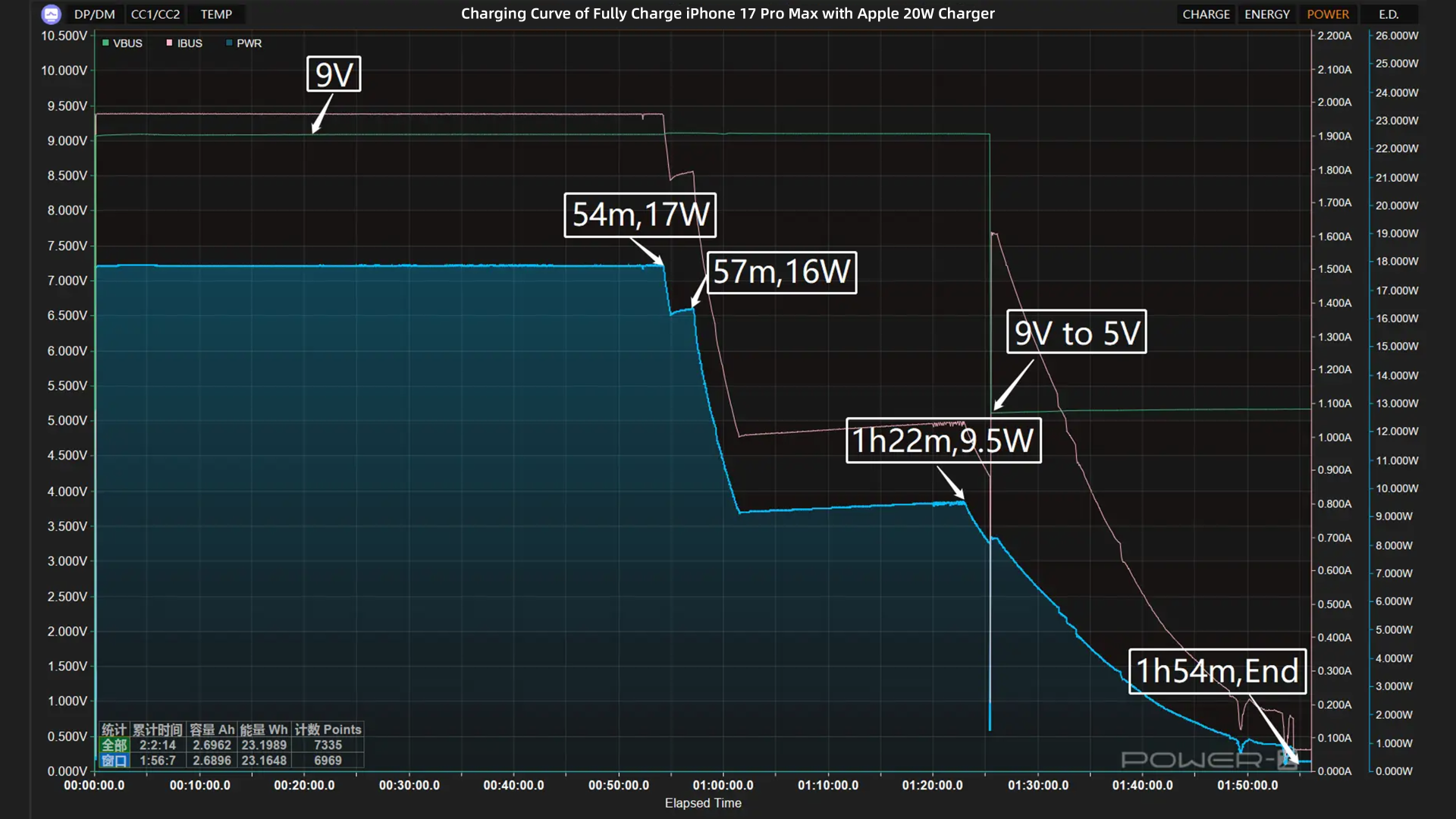
First, let’s look at the charging curve of the 20W charger.
Limited by its power output and available PD profiles, the voltage starts at around 9 V, and the charging curve can be divided into four parts. In the first part, the peak power remains at 17W for the initial 54 minutes. Then the power gradually drops to 16W and later to 9.5W. The final stage begins at 1 hour and 22 minutes, during which the power slowly tapers off to nearly zero. The voltage falls to 5V at around 1 hour and 25 minutes. A full charge takes 1 hour and 54 minutes.
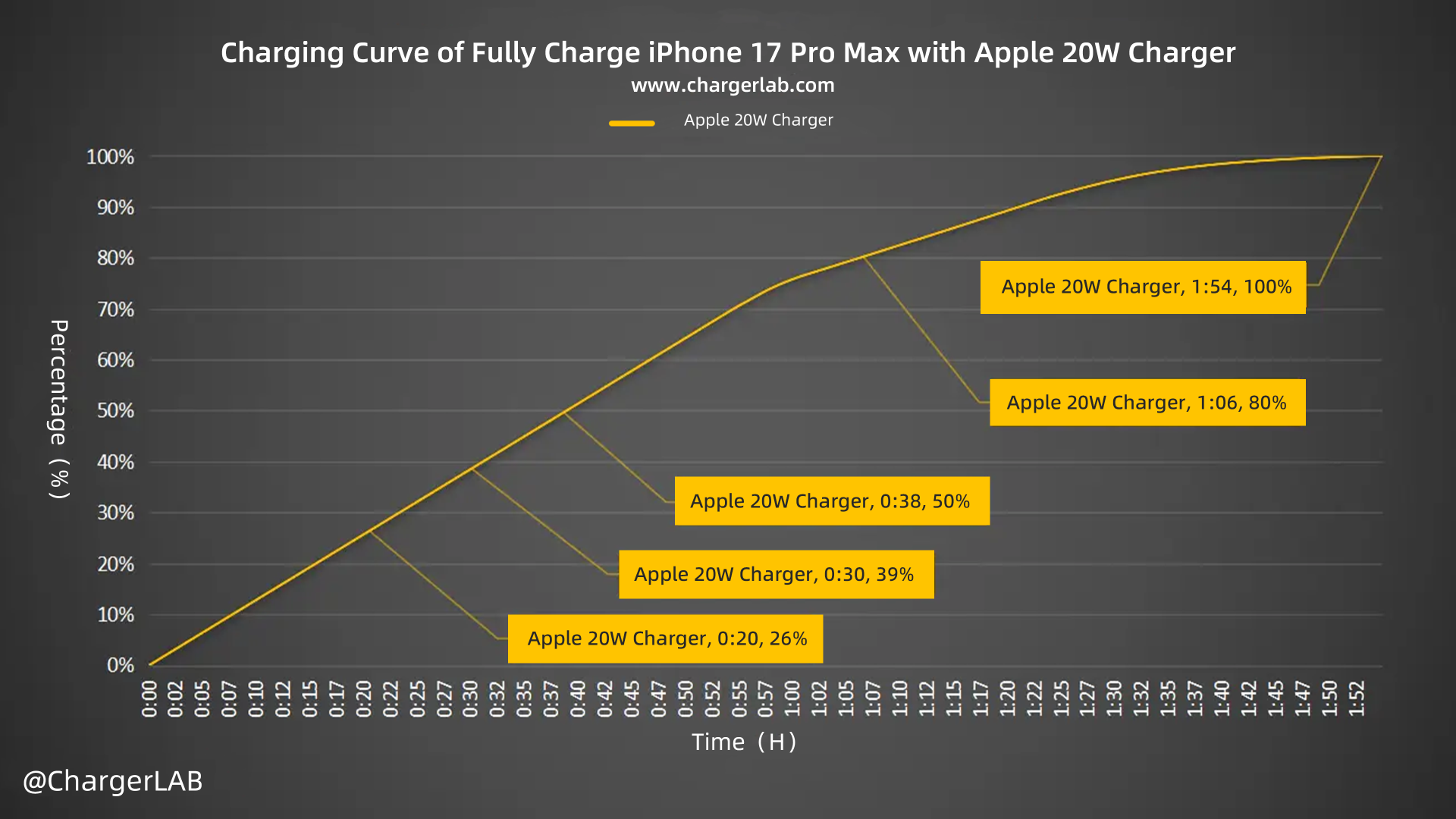
At the 20-minute mark, the battery reaches 26%. It climbs to 39% at 30 minutes, 50% at 38 minutes, and 80% at 1 hour and 6 minutes. A full charge takes 1 hour and 54 minutes.
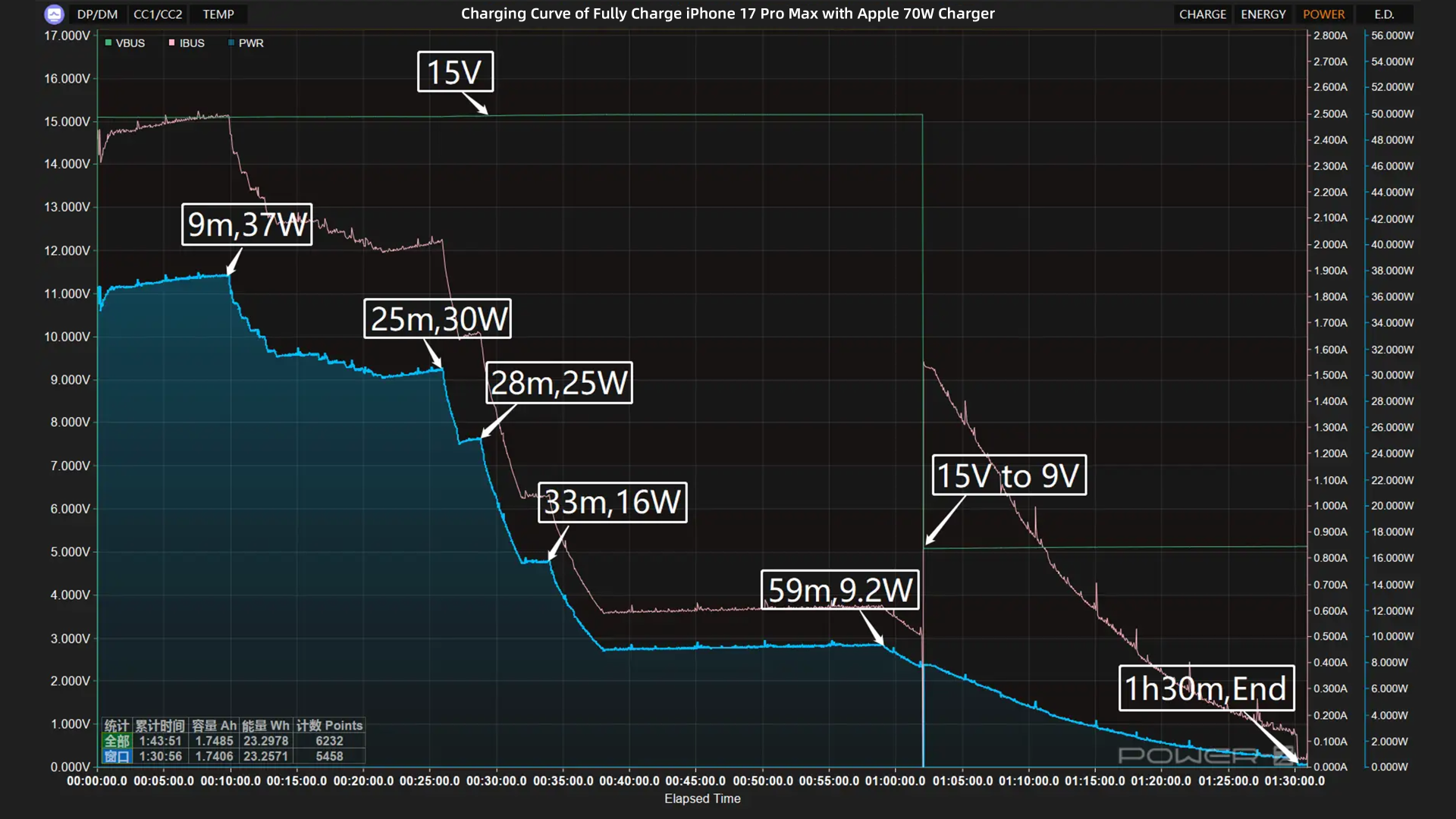
Now let’s take a look at the charging curve of the 70W charger.
The voltage is around 15V at first, and the charging curve can be divided into six parts. In the first part, the peak power stayed at 37W for the first 9 minutes. Then, the power gradually drops to 30W, 25W, 16W, and 9.2W in turn. The final part begins at 59 minutes, and the power slowly drops to almost zero. The voltage dropped to 9V at about 1 hour and 2 minutes. It takes 1 hour and 30 minutes to be fully charged.
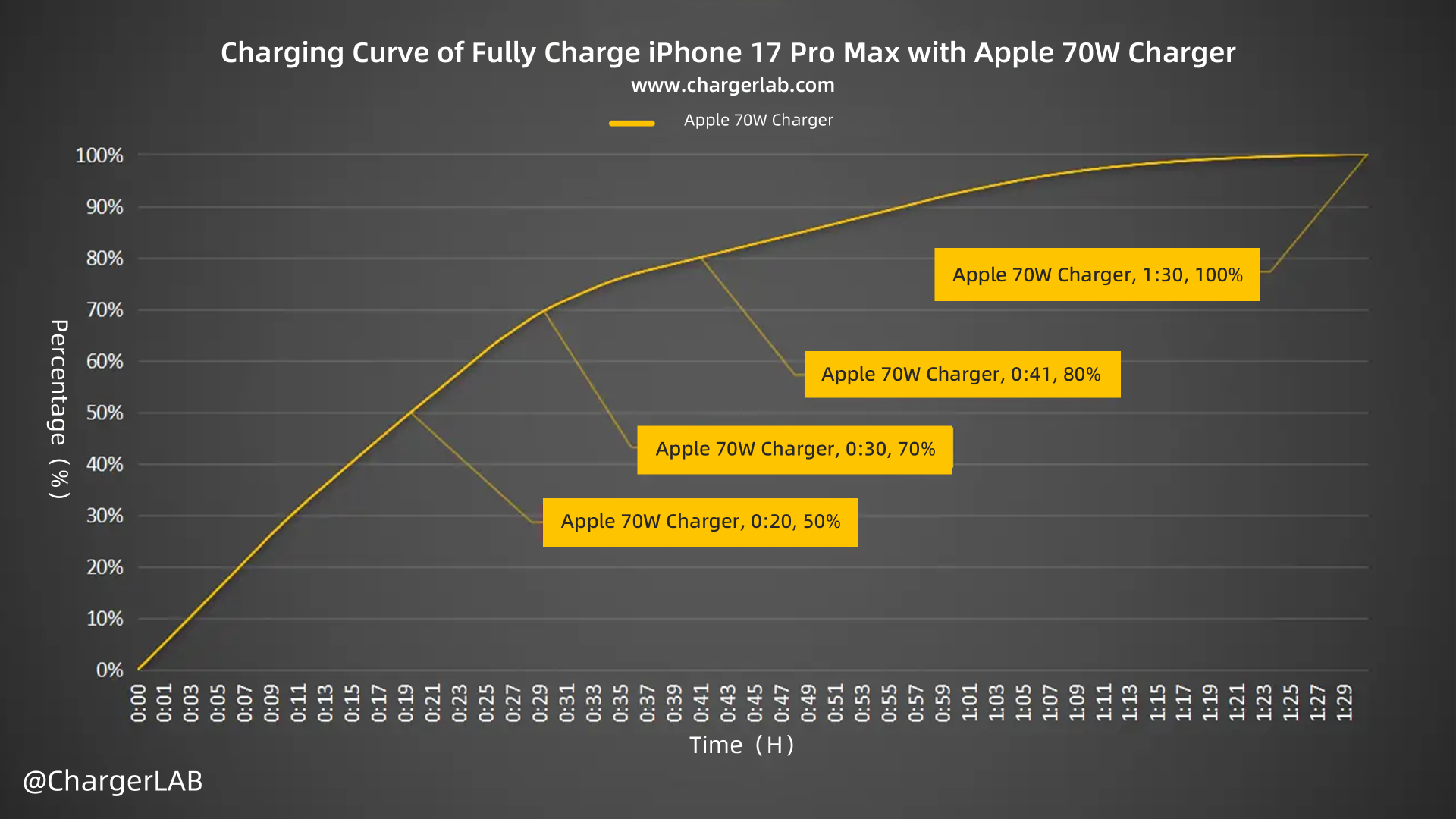
It reaches 50% in just 20 minutes, 70% at the 30-minute mark, and 80% at 41 minutes, with a full charge completed in 1 hour and 30 minutes.

Lastly, let’s take a look at the curve of the 140W charger.
The voltage is around 15V at first, and the charging curve can be divided into six parts. In the first part, the peak power stayed at 37W for the first 8 minutes. Then, the power gradually drops to 26W, 25W, 15W, and 9.2W in turn. The final part begins at 59 minutes, and the power slowly drops to almost zero. The voltage dropped to 9V at about 1 hour and 2 minutes. It takes 1 hour and 29 minutes to be fully charged.
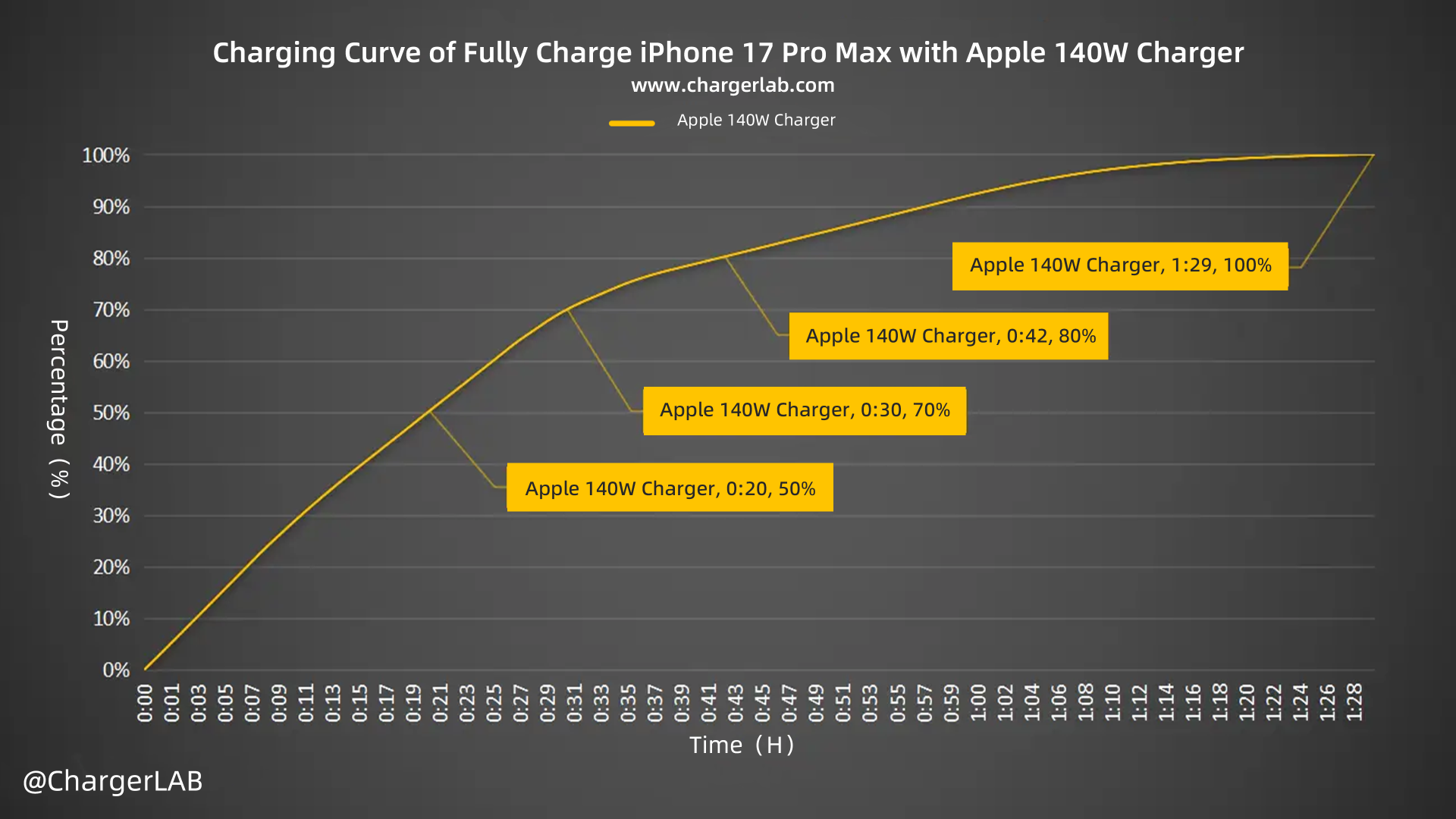
Charging reached 50% in 20 minutes, 70% at the 30-minute mark, and 80% at 42 minutes, with a full charge completed in 1 hour and 29 minutes.

Consolidating all the data into a single curve chart, the 20W charger is significantly slower than the other three due to its power limitations. The charging curves of the 40W, 70W, and 140W chargers largely overlap, with similar timings at each key point.
Temperature Test
We also recorded the highest temperature on the front and back after charging for 10 minutes, 20 minutes, and 30 minutes.
10 Mins Charging
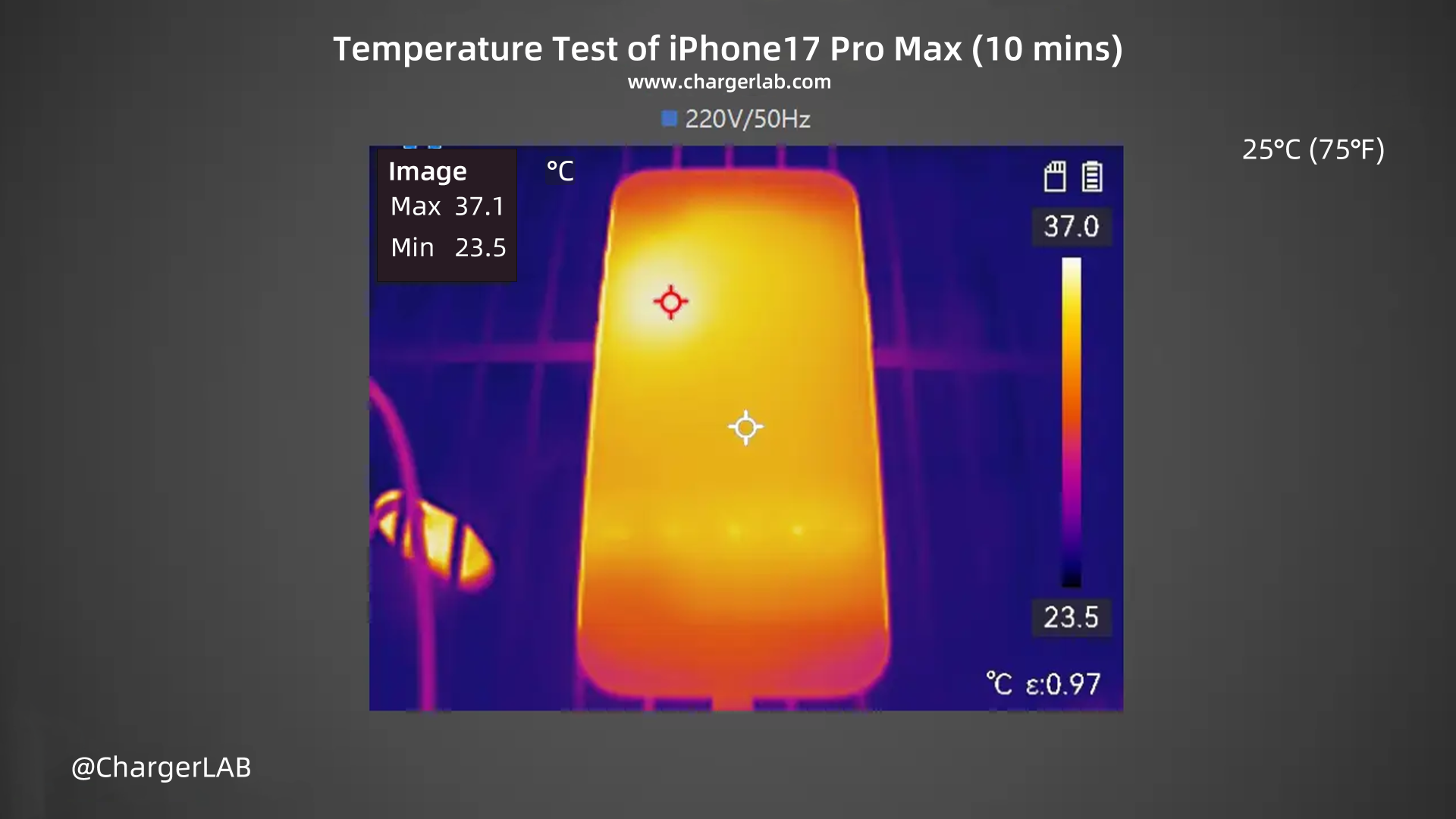
After 10 minutes, the maximum temperature on the front is 37.1℃ (98.78 ℉), and the charging power is about 33W.

The back is 37.6℃ (99.68 ℉).
20 Mins Charging

After 20 minutes, the maximum temperature on the front is 38.3℃ (100.94 ℉).

The back is 39.5℃ (103.1 ℉).
30 Mins Charging
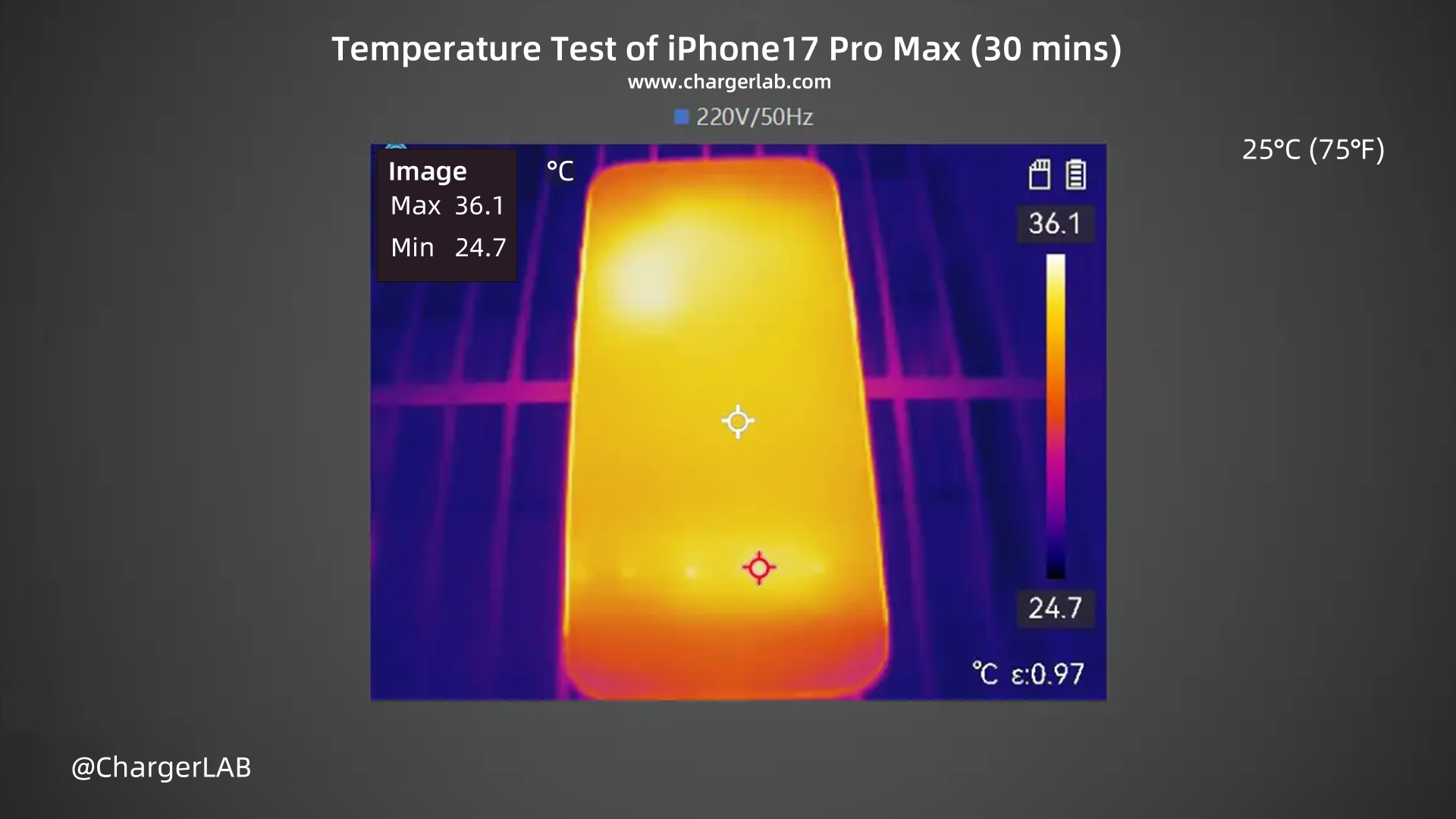
After 30 minutes, the maximum temperature on the front drops to 36.1℃ (96.98 ℉).
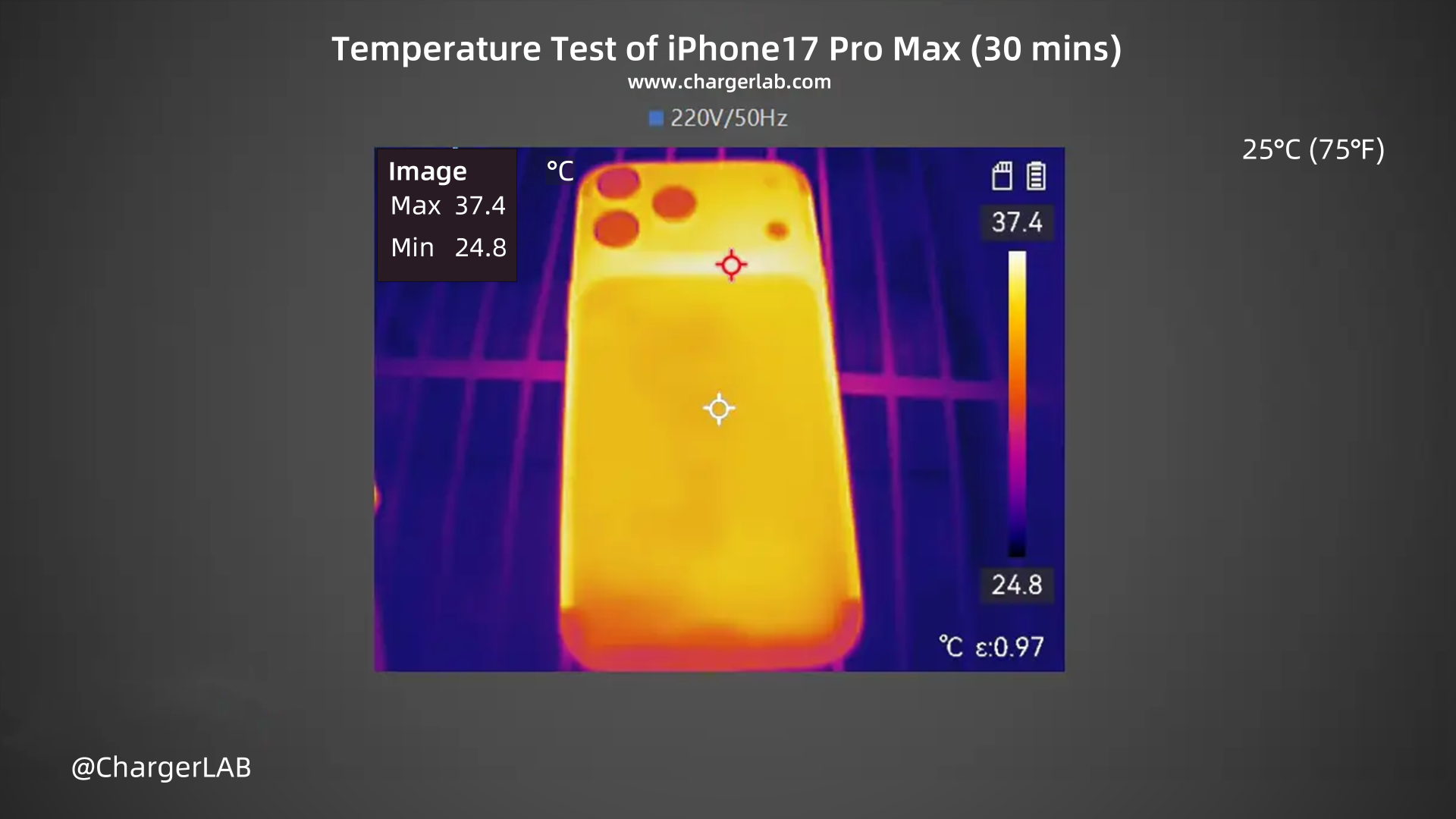
The back is 37.5℃ (99.5 ℉).
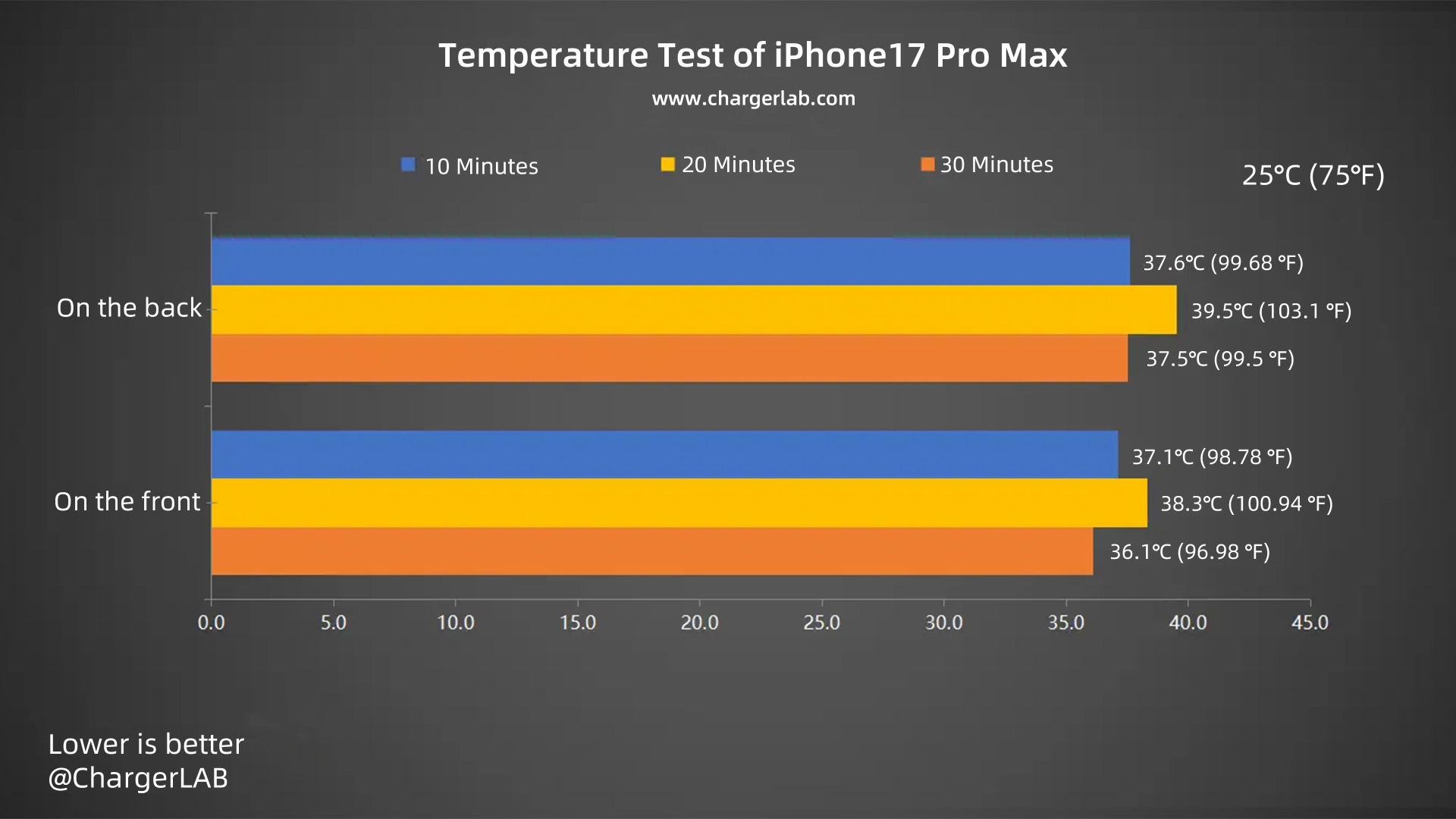
From this bar graph, the highest temperature is about 39.5℃ (103.1 ℉) on the back at 20 minutes. At this time, the charging power is about 31W. Within the first 30 minutes of charging, the temperature remained between 36.1°C and 39.5°C.

Compared with the charging temperature of the iPhone 16 Pro Max, the iPhone 17 Pro Max generally runs 2–3°C warmer. This is likely due to the longer duration spent at high charging power, resulting in a slightly higher temperature than the previous generation.
Summary of ChargerLAB
The iPhone 17 Pro Max, with its all-new design, powerful performance, advanced imaging system, and impressive battery life, has become a popular flagship device, providing a robust creative platform for professionals and content creators. In terms of charging, the iPhone 17 series has increased charging power to 40W. In testing, both official and third-party chargers were able to reach around 36W, demonstrating excellent compatibility. It is recommended that users choose PD chargers of 40W or higher for an optimal charging experience.
The iPhone 17 Pro Max delivers upgrades across performance, display, imaging, and battery life, offering an outstanding experience for users seeking the ultimate performance. Fast charging has also seen significant improvements, with a 50% charge achieved in just 20 minutes, showing that Apple is gradually catching up in the fast-charging arena. For those who prioritize top-tier performance, exceptional imaging, and a premium display, and are less concerned with price and device weight, the iPhone 17 Pro Max is undoubtedly an excellent choice.
Related Articles:
1. Compatibility Test of iPhone 17 Pro Max
2. Slower than 16? | Charging Compatibility Test of iPhone Air
3. Under 30W | Charging Compatibility Test of iPhone 17 Pro

